#3D modeling overview
Explore tagged Tumblr posts
Text
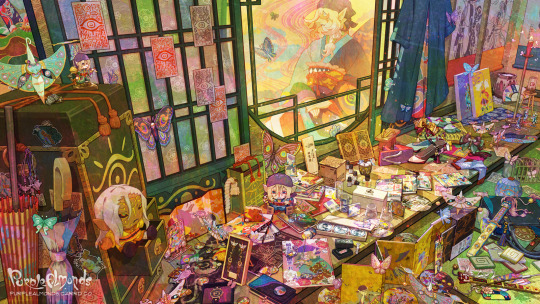
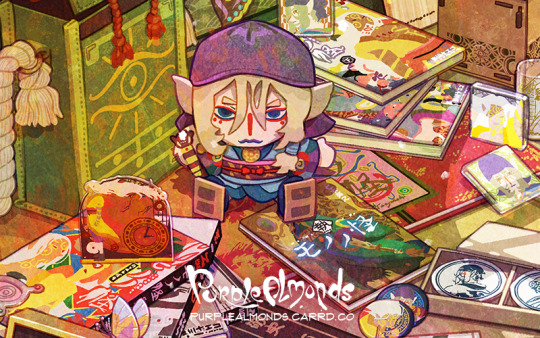


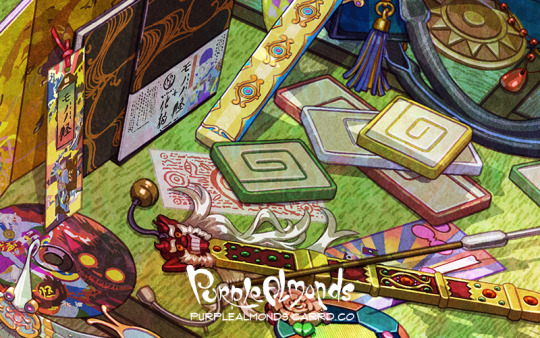
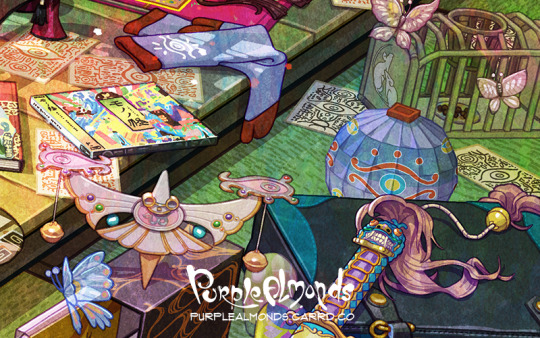
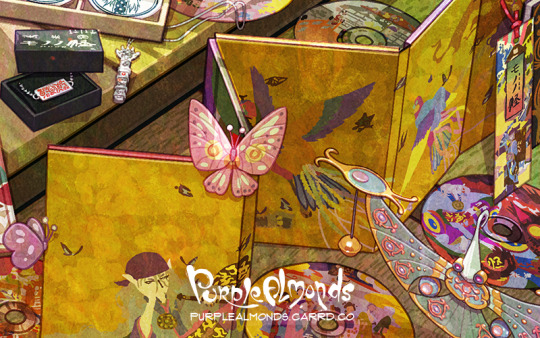
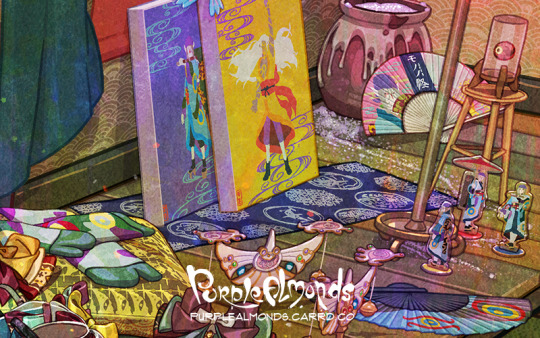
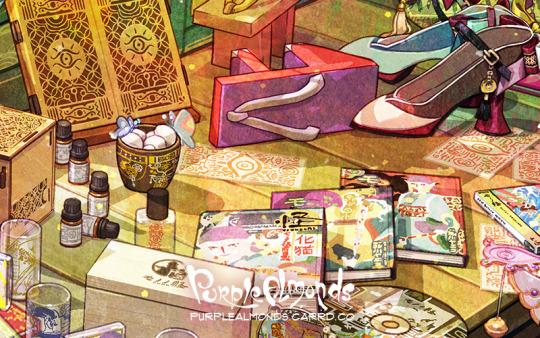
Finished this just in time for the new trailer drop! This is my Mononoke illustration featuring assorted merch from the anime, movie, and stage play! How many can you recognize? ⚖️👹
(Yes, please send answers in the replies! Answers, progress pics, artist commentary will be drafted on a separate post when I'm less tired) ⭐️ UPDATE 04/03/24: Abridged artist commentary is now available under the cut! For the full version, please see the Google Doc linked in the replies.
👁️Overview
Late last year, I rather belatedly discovered Mononoke’s 15th anniversary came and went, and with it, an entire swath of new content to manically pore over. This is an illustration of the various Mononoke merchandise, props, and set dressing I discovered.
---
🔎Scope
Some fun facts regarding the work that went into this illustration!
Not including research time, this project ran for roughly two months, consuming much of my waking hours outside of my full time and freelance jobs.
While the illustration does not depict all of my findings, it does feature over 120 unique props and set dressings!
The majority of the props and set dressing were modeled to varying degrees of detail in SketchUp.
To model prep, I often put together schematics on Photoshop or Illustrators. Some were created from scratch. Others were created with the liberal usage of the Photoshop transform and perspective warp function.
The master file is 1.5GB. The dimensions are 6400x3600 at 300 dpi, and contains over 2,200 layers.
Near the end of production, the master file became so unwieldy I created a separate working file. This way, I could create assets lag-free then import the layers into the master file.
---
Past this point is where most of the commentary cuts were made for the sake of brevity. Again, look in the replies for the Google Doc link containing the full version with a table of contents for easier navigation!
---
🗳️3D Layout
As you can see, the backbone of this illustration is the 3D model. I spent perhaps 30-40% of my production time on this stage.
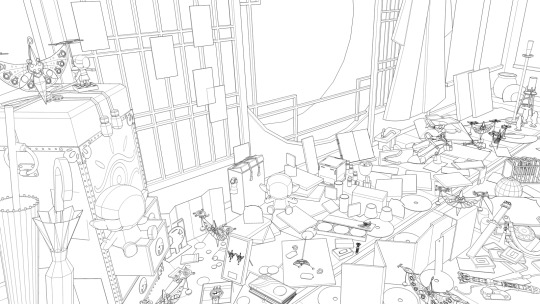
And this is the lit version. The lighting ultimately got downplayed in favor of showcasing the vibrant colors. I like how simple it looks though!
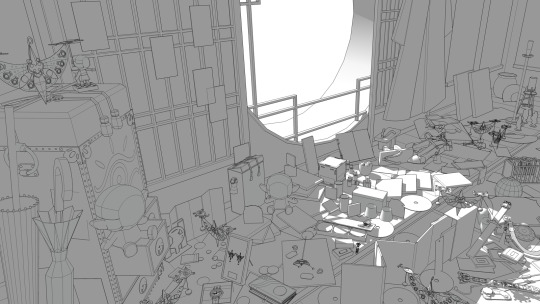
---
🎬Production-Based Set Dressing
In addition to merchandise, I wanted to insert set dressing and props from the various Mononoke productions.
🦊Kusuriuri
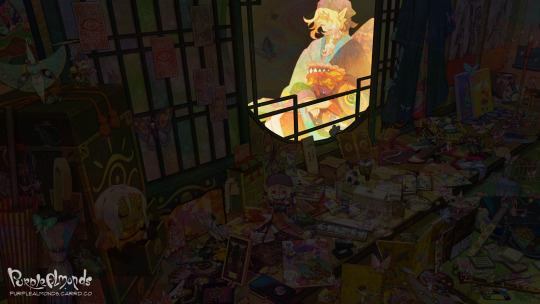
It’s odd to have a section dedicated just to him, but his unique appearance warrants it. His garb and overall appearance is an amalgam of the anime and movie. The original intent was ambiguity– kind of like the blue/black vs. yellow/white dress phenomena a few years back. But after doing the color flats, I rather liked how the rich, unaltered colored fit with the overall composition so it became more blatant. I’m surprised that nobody has commented on this since I published the illustration. Maybe because I didn’t feature him in a close-up?
🐈 kai ~Ayakashi~Bake Neko (2006)
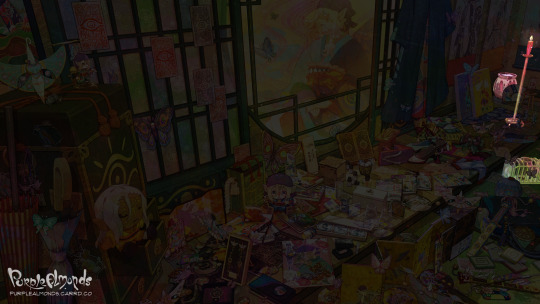
Finding props iconic to this story arc (outside of the Kusuriuri’s tools of trade, of course) was somewhat difficult. While the environment was richly decorated, it mainly consisted of 2D artwork which I wasn’t keen on retracing. I opted to paint objects that characters interacted with or featured heavily in the show.
Salt Jar
Candlestick
Rat Trap
🦋Mononoke (2007)

The props fall into three distinct categories here: Kusuriuri’s tools and trinkets; things featured in the opening and ending credits; and objects iconic to each of the five story arcs in the series. I tried to keep most of them clustered on the tatami, but as space grew scarce some props trickled up onto the deck as well.
Medicine Box
Exorcism Sword
Tenbin
Paper Talisman
Mirror
Ring
Geta Sandal
Necklace
Paper Umbrella (Zashikiwarashi)
Daruma Dolls ( Zashikiwarashi)
Gunpowder Ball (Umi Bozu)
Smoking Pipe (Nopperabou)
Genjiko Blocks (Nue)
Train Ticket (Bake Neko)
Lantern (Anime OP)
Butterflies (Anime EP)
☂️Mononoke: Karakasa (2024)
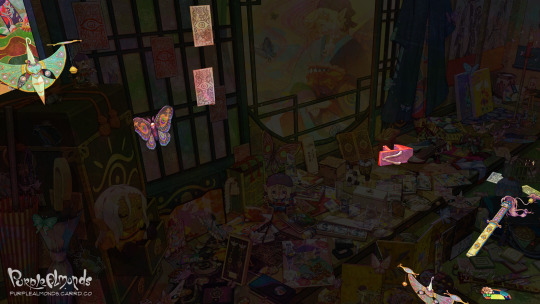
Pretty slim pickings for the new movie since I only had the teaser, first trailer, and movie poster to reference from. Kusuriuri’s tools of trade were a given, but finding memorable and narratively significant objects was a tad troublesome.
Thankfully, the set dressing ended up (however subconsciously) strikingly similar to the movie’s environment design, down to the green tatami and multicolor shoji screen. I suppose at this point I was so immersed in Mononoke content that its aesthetics subconsciously informed my design choices!
Exorcism Sword
Tenbin
Paper Talisman
Comb
Movie Poster
Butterfly (Custom design)
---
🪭Official Merchandise
Goods related to canonical narratives and/or productions.
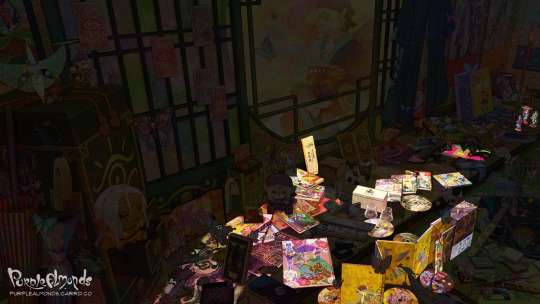
🎊15th Anniversary
Mononoke Shu - A light novel by Hideyui Niki & illustrated by 2964_KO
Whiskey Glass & Box
📖 Key Frame Art Books by Hashimoto Takashi
Ayakashi Key Art Frame Book (2010)
Key Frame Art Book vol.9 (2017)
📚Manga by Yaeko Ninagawa
Kai Ayakashi: Bake Neko Vol. 1-2
Kai Ayakashi: Mononoke Prequel
Mononoke Vol. 1-10
🎭Butai Mononoke
Bakeneko Pamphlet
Zashikiwarashi Pamphlet
Zashikiwarashi Acrylic Standees
Zashikiwarashi Manegi
💿Physical Media
Official OST CD
DVD Box Set
Yokai Pattern Fabric
---
Common Collab Merchandise
This category consists of goods that are generally more affordable and feature graphics from the source material with minimal alterations.

Amnibus
Wall Scrolls
Tenugui Fabric
Shot Glasses
Minoyaki Bean Plates
ANIGA-TER
Stickers
Can Badges
Canvas Prints
Anique
Diorama Acrylic Stand
Acrylic Blocks
Challenge Kuji
Kusuriuri & Hyper Clocks
eeo Store Online
Folding Fan
Keychains
Can Badges
gj character G
Cushion
Acrylic Charms
Neo Gate
Satchels
Mini Badges
Mini Badges by Mame Shinoda
---
High-End Collab Merchandise
Goods which derive motifs from the characters, props, and patterns from the production and transform them in an elevated manner through abstraction or usage of precious materials.
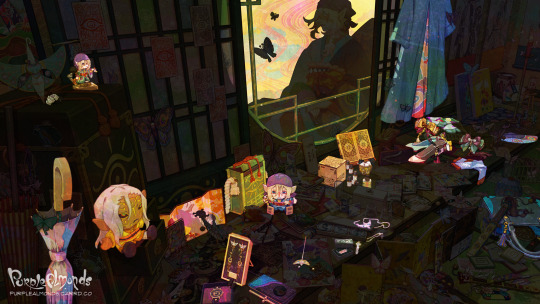
gj character G
Exorcism Sword Ring
Goodsmile
Kusuriuri Nendoroid Figurine
Folding Screen
Kusuriuri & Hyper Plush
Tote Bag
Kaya
Umbrella
Tenbin Kanzashi
Tabi Socks
Dress
Kotobukiya
Figurine
Mayla
Pump Heels
Kusuriuri & Hyper Hairpins
Tenbin Earrings
Hyper Earrings
Noitamina Apparel
Perfume
Tenbin Necklace
Folding Fan
Super Groupies
Purse
Wallet
Watch
Tsumuji Design
Exorcism Sword Necklace
Ofuda Bracelet
Useless Use Lab
Fragrance Set
Air Purifier
Three-Sided Mirror
#mononoke 2007#mononoke 2024#mononoke fanart#medicine seller#kusuriuri#モノノ怪#mononoke anime#薬売り#mononoke#fan art#purplealmonds#2024
1K notes
·
View notes
Text
research & development is ongoing
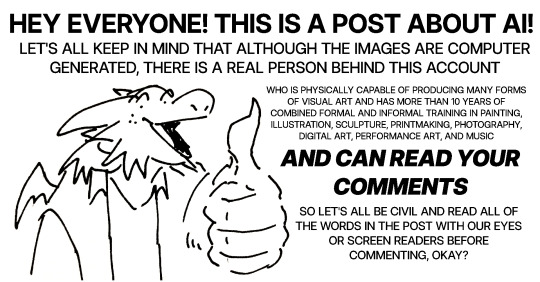
since using jukebox for sampling material on albedo, i've been increasingly interested in ethically using ai as a tool to incorporate more into my own artwork. recently i've been experimenting with "commoncanvas", a stable diffusion model trained entirely on works in the creative commons. though i do not believe legality and ethics are equivalent, this provides me peace of mind that all of the training data was used consensually through the terms of the creative commons license. here's the paper on it for those who are curious! shoutout to @reachartwork for the inspiration & her informative posts about her process!
part 1: overview
i usually post finished works, so today i want to go more in depth & document the process of experimentation with a new medium. this is going to be a long and image-heavy post, most of it will be under the cut & i'll do my best to keep all the image descriptions concise.
for a point of reference, here is a digital collage i made a few weeks ago for the album i just released (shameless self promo), using photos from wikimedia commons and a render of a 3d model i made in blender:
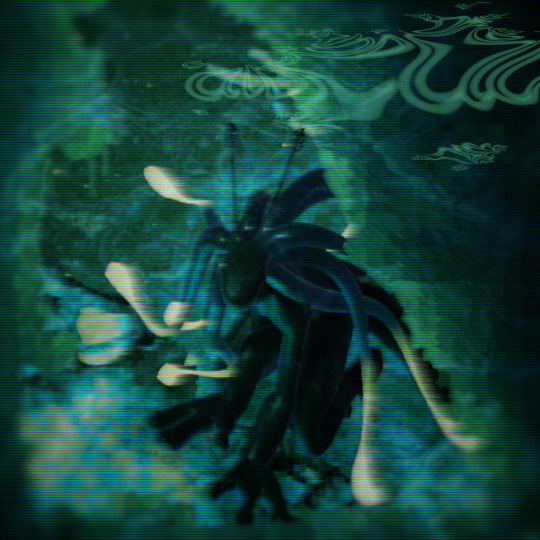
and here are two images i made with the help of common canvas (though i did a lot of editing and post-processing, more on that process in a future post):
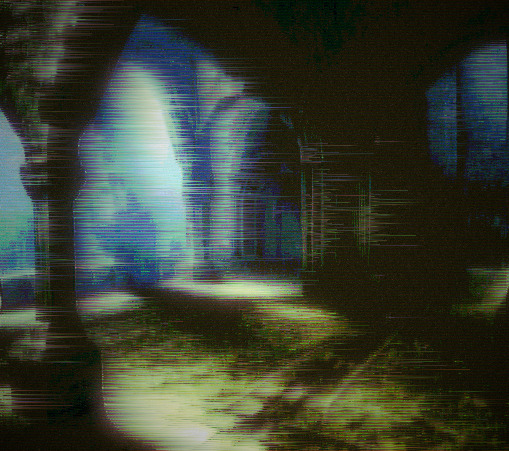

more about my process & findings under the cut, so this post doesn't get too long:
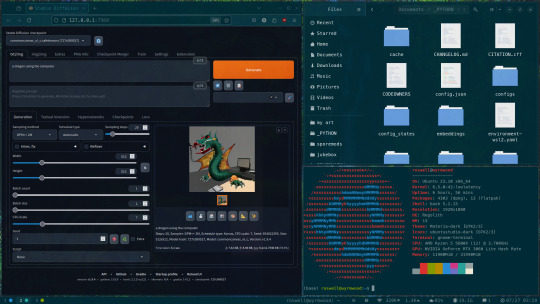
quick note for my setup: i am running this model locally on my own machine (rtx 3060, ubuntu 23.10), using the automatic1111 web ui. if you are on the same version of ubuntu as i am, note that you will probably have to build python 3.10.6 yourself (and be sure to use 'make altinstall' instead of 'make install' and change the line in the webui to use 'python3.10' instead of 'python3'. just mentioning this here because nobody else i could find had this exact problem and i had to figure it out myself)
part 2: initial exploration
all the images i'll be showing here are the raw outputs of the prompts given, with no retouching/regenerating/etc.
so: commoncanvas has 2 different types of models, the "C" and "NC" models, trained on their database of works under the CC Commercial and Non-Commercial licenses, respectively (i think the NC dataset also includes the commercial license works, but i may be wrong). the NC model is larger, but both have their unique strengths:
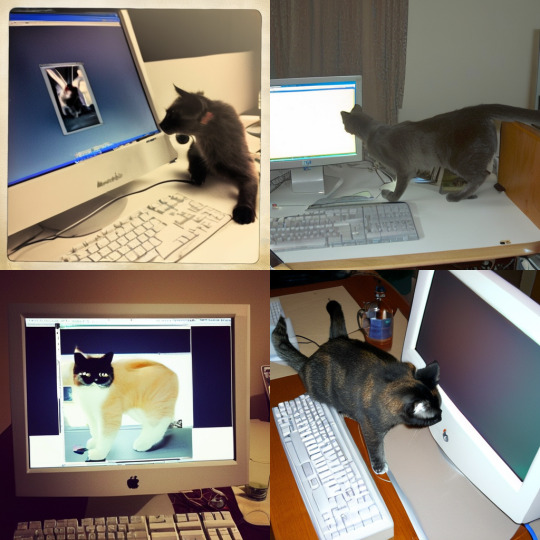
"a cat on the computer", "C" model
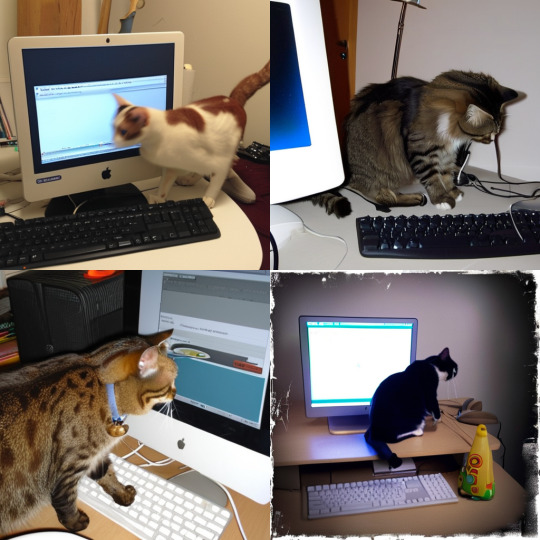
"a cat on the computer", "NC" model
they both take the same amount of time to generate (17 seconds for four 512x512 images on my 3060). if you're really looking for that early ai jank, go for the commercial model. one thing i really like about commoncanvas is that it's really good at reproducing the styles of photography i find most artistically compelling: photos taken by scientists and amateurs. (the following images will be described in the captions to avoid redundancy):
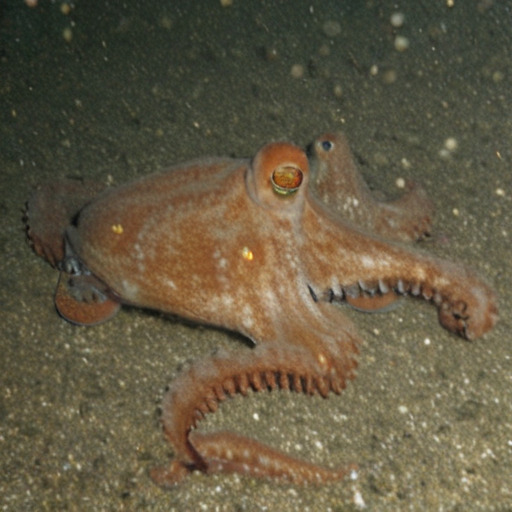
"grainy deep-sea rover photo of an octopus", "NC" model. note the motion blur on the marine snow, greenish lighting and harsh shadows here, like you see in photos taken by those rover submarines that scientists use to take photos of deep sea creatures (and less like ocean photography done for purely artistic reasons, which usually has better lighting and looks cleaner). the anatomy sucks, but the lighting and environment is perfect.
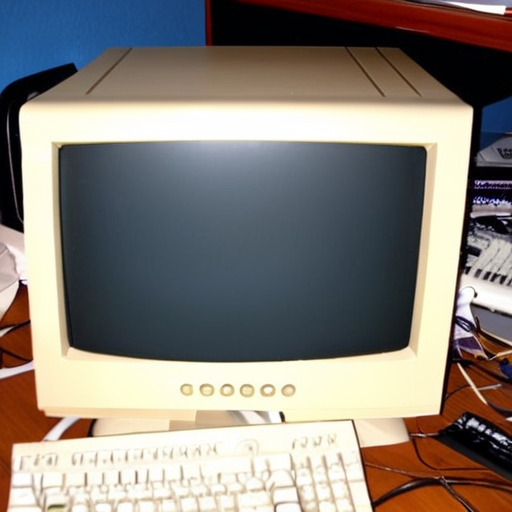
"beige computer on messy desk", "NC" model. the reflection of the flash on the screen, the reddish-brown wood, and the awkward angle and framing are all reminiscent of a photo taken by a forum user with a cheap digital camera in 2007.
so the noncommercial model is great for vernacular and scientific photography. what's the commercial model good for?
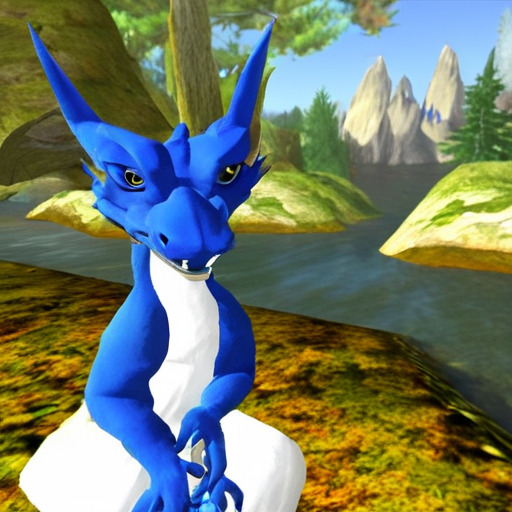
"blue dragon sitting on a stone by a river", "C" model. it's good for bad CGI dragons. whenever i request dragons of the commercial model, i either get things that look like photographs of toys/statues, or i get gamecube type CGI, and i love it.

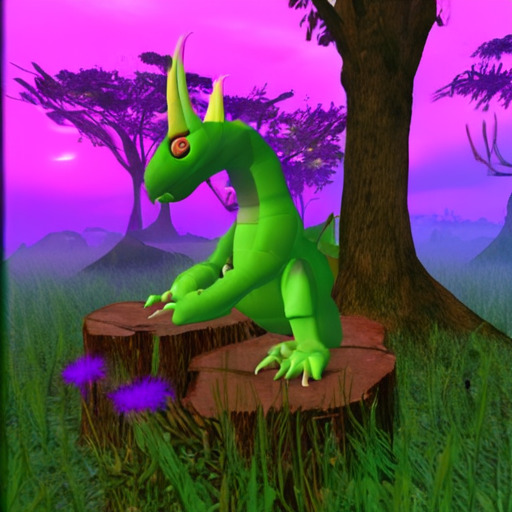
here are two little green freaks i got while trying to refine a prompt to generate my fursona. (i never succeeded, and i forget the exact prompt i used). these look like spore creations and the background looks like a bryce render. i really don't know why there's so much bad cgi in the datasets and why the model loves going for cgi specifically for dragons, but it got me thinking...
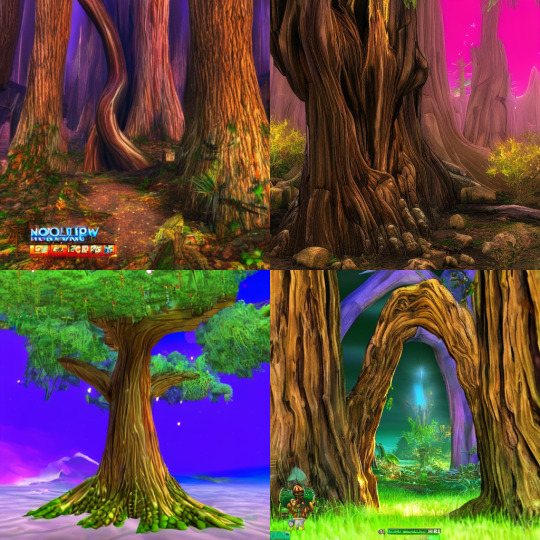
"hollow tree in a magical forest, video game screenshot", "C" model
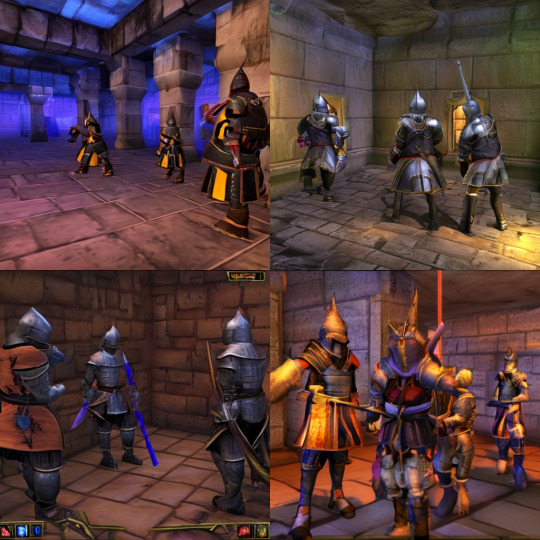
"knights in a dungeon, video game screenshot", "C" model
i love the dreamlike video game environments and strange CGI characters it produces-- it hits that specific era of video games that i grew up with super well.
part 3: use cases
if you've seen any of the visual art i've done to accompany my music projects, you know that i love making digital collages of surreal landscapes:
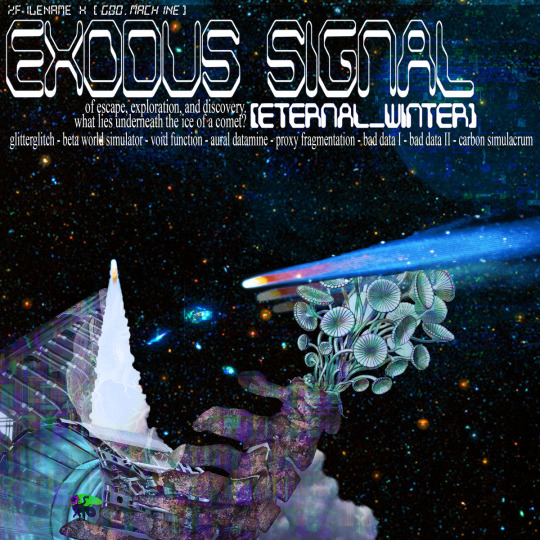
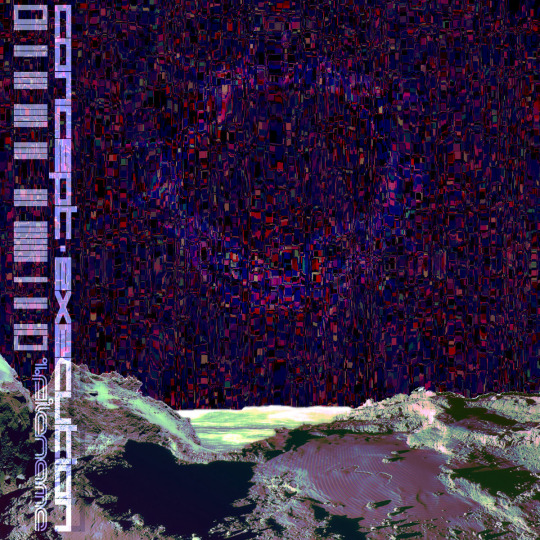
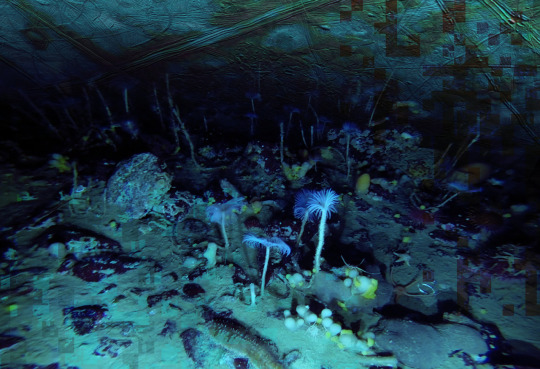
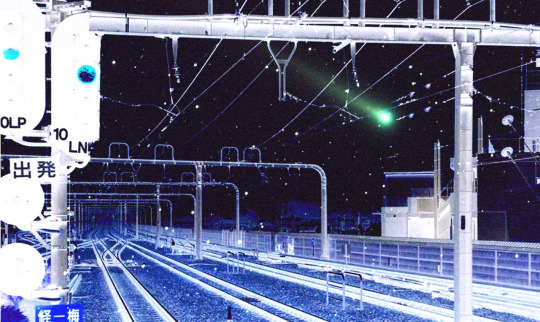
(this post is getting image heavy so i'll wrap up soon)
i'm interested in using this technology more, not as a replacement for my digital collage art, but along with it as just another tool in my toolbox. and of course...
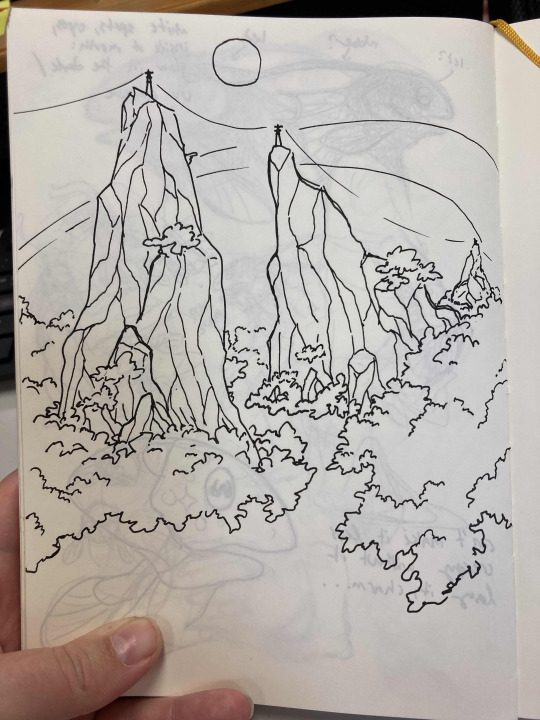
... this isn't out of lack of skill to imagine or draw scifi/fantasy landscapes.
thank you for reading such a long post! i hope you got something out of this post; i think it's a good look into the "experimentation phase" of getting into a new medium. i'm not going into my post-processing / GIMP stuff in this post because it's already so long, but let me know if you want another post going into that!
good-faith discussion and questions are encouraged but i will disable comments if you don't behave yourselves. be kind to each other and keep it P.L.U.R.
201 notes
·
View notes
Text
BMOP: A history of the Abandoned Koro
Now that things have all come out, and the project is well and truly over, I thought I'd take a moment to talk a bit about something I worked on in the game, the "Abandoned Koro" area, now that there's video footage of a playthrough I can easily reference.

I suppose as a quick primer, I was with the BMOP team from around March of 2021 to November of 2022, serving as both 3D art lead and Level design lead for a time. There's a post out there about my experiences with the leadership of the team that I mostly stand by still, I do feel bad for how the project ended, and I have come around a bit to remember the positive times more than the negative, but that doesn't erase what happened.
So to begin, when I came on level design was a fairly inactive sub channel of the game development discord, some ideas got tossed around occasionally, but not much seemed to be happening, before I'd joined there was a rough map drawn up by the then current level design lead.

It was very basic stuff, there was a version of this map in engine that had been extruded a bit to make it a kind of playable space, one area had some trees on it and some random platforms.

One area that interested me greatly was this part in the south, the so called "Abandoned Koro"

The rough idea being that it was the Le-Koro seen in the GBA game Bionicle: Quest for the Toa, that had been abandoned in favour of the one seen in the browser game Mata Nui Online Game and the cancelled PC game Bionicle: Legend of Mata Nui, as the one in QFTT had a lot of wooden structures while the one seen in the other two was more like a woven nest.
At the time I was just a 3d modeller, and had never really done any real level design, but the concept just really inspired me, so I went off and in blender sketched out a possible level layout for this area.

I made a bunch of renders and wrote out how I thought the level could work, which can be seen in this document HERE.
For a quick overview, the idea was you'd enter the area, the bridge would break, you'd have to clear a river to activate the water wheel on a large mechanical tree that would allow you passage upwards, and then navigate through the Nui-Rama infested ruins of the village before coming to a cave.




The tree was something I poured a lot of time in to, its worthy of its own post at some point in the future.
Now I'll be honest, I was super nervous about releasing this document to the team, I thought I was overstepping my bounds. I was just a relatively new 3d modeller on the team, I didn't have the right to be talking about level design, but to my surprise people were really receptive to it, and I very quickly got added to the level design team¹.
I ended up doing a rough blockout in engine. This was back in the time before Lewa had been chosen to be the main player character, so it was still Tahu.
youtube
This was the first time I'd ever touched Unreal, so it took a while. That's why the sky is black, I didn't know how to add a skybox.

I never got in to level scripting, but as a proof of concept, I think it was successful.
You can see that in this version of the level it had already progressed, now there was the idea of using the Pakari to break the dam, so finding it was the first task on the ground.
This version wasn't in the actual demo map, because as I said before the demo wasn't really very fleshed out at the time. One thing my map showed though was that the demo was way too big. The level design lead at the time had decided the size based on how long it took to get around the map as a perfectly flat plane with no terrain, at max run speed, with no obstacles. This is a very flawed methodology to say the least. Having an actual level with things scaled to the character really started to show the holes in this, and eventually, once I became lead, the demo area was massively shrunk.
Here's a version from just a month later. The version is now part of the new, more compact demo area, but its mostly barren at this point.
youtube
This version was actually completely rebuilt from the ground up because it had been decided to try out voxels as a basis². They were a pain to deal with and this was overturned eventually. I'd say in total, including the 3d sketch I did, I re-built this map maybe 4 times.

One benefit of voxels was it was trivial to have caves, so this is where the idea of the pakari being found in a cave started to emerge.
As I continued to play and refine the demo it became clear how much the movement systems would need to be tweaked. There seemed to be this idea in the team that everything could be done separately and bolted together later, so character moment was all handled by someone jumping around on some big blocks in a test map whereas level design was off doing their own thing, but it really wasn't working. So while the movement felt good in a vacuum, actually putting it in context really exposed a lot of issues. You could easily jump over any enemy you could come across, as said earlier maps had to be huge in order to make the world seem big while you were running at full speed, and after about 3 jumps you'd be 20 metres in the air.
At this point the idea still was to have the entire island of Mata Nui be one large open area you could freely explore, so the sheer size of the maps resulting from the over powered movement was a major issue. I lobbied very hard to have things pulled back and eventually they were.

its a bit out of order, but here's the demo area from closer to when I left. Its a fraction of the size of the original map
Here's another video from a month later.
youtube
As much as it pains me to say it, this is basically it in terms of meaningful development. By this point Lewa had been locked in as the playable character, and the movement had been dialed back to a more reasonable degree, so I was able to really start trying to refine the area. This is where I ran in to a fatal issue.
No one else wanted to play the game.
And what was worse barely anything worked.

The level is still in what I would call a grey box state. I used a couple tree trunk assets I'd made here and there, and put in a big canopy asset from one of the many asset packs we had for a bit of ambience, but it was all still very basic geometry, easily changed or modified.
Unfortunately, there's only so much you can do for playtesting your own area. You built it: you know where everything is, what's supposed to happen, where you're supposed to go. You can try to pretend to play it as a new player, but that only gets you so far. I was hoping people on the team would play it and provide feedback³, but outside of maybe one or two people a handful of times⁴, trying to get any really feedback was was a futile effort.
The thing was that this area was very complex. If the demo was a vertical slice of the game as a whole, this area was itself a microcosm of the demo⁵. It had platforming, puzzle solving, combat, mask powers, the lot. Now unfortunately for me, barely any of those systems actually worked.

As an example, this long ledge was for a long time a stand in for vine swinging, then rail grinding⁶, then was ultimately just replaced by a platform.
So things had kind of hit a wall. I couldn't properly design areas with combat in them until combat existed in a more stable state, I couldn't design platforming sections until platforming worked in a consistent way. I couldn't even adjust the overall flow of the level because everyone else basically refused to give feedback.
But the unfortunate thing is, in August of that year they'd released a teaser trailer.
And that trailer had gotten hundreds of thousands of views.
This is where the whole development of this game really went off the rails. Now there was this push to get things in a presentable state, start set dressing and making final assets so things could be shown off.
But I refused. Everything was too up in the air to commit to set dressing, this is why block out exists, if the jump changes height its no big issue to grab the couple cubes an area is made out of and shift them up or down, if combat is found to need more space its easy to make things bigger, or add or take away walls. If something is confusing things can be shifted. Once set dressing starts now you're dealing with dozens to hundreds of objects being scattered about, even the smallest tweak can lead to a mess.
Not to mention set dressing raised its own series of issues, from plants triggering the IK on the toa's feet, making their knees go up to their chin when walking through a bunch of ferns, to collision volumes being oversized or offset, meaning that big rock face they just added has now created a massive invisible wall in another area. Once the addition of some plants caused all ledges within a wide radius to no longer work⁷.
It was a miserable state of affairs. My mental state rapidly deteriorated as I fought against this, I became very short tempered and irritable, and eventually near the end of 2022 I was kicked from the team. It was such a relief honestly.
I think the tragic thing is, set dressing is actually quite a fast process. The starting area went from looking like this to something quite like the final in about a month?


But you can't show off the first screenshot on twitter⁸.
I guess I'll spare a quick moment to talk about the final version seen in the video.
youtube
Its at 46 minutes in if the link doesn't work
Its...fine? The assets they've made are all good, though I think they lost the QFTM inspiration along the way. The thing that stands out to me is just how...little its moved on from 2022. Just look how much progress was made in like 3 months, compare that to now, 3 years later. Temporary platforms I placed are still in the exact same spot. I do find the addition of a matoran with a key for the cave to be a not great addition, if only for the fact that you need to find a tiny green man in amongst the overwhelming greenery to proceed.


One part I found quite amusing was the final enemy encounter. It was supposed to be this large hut, probably Matau's, that had been completely overtaken by a hive, and Nui-Rama would spawn constantly from it until the encounter was over.

There were a lot of concepts drawn up, but I guess it just...never happened. I also don't know why there's waves of fikou there either, that was after my time I think.


So that's really all I have to say about that version, it looks okay. Its still clearly unfinished. It kinda works more than it did when I left, but its shockingly not that much different, outside of some new assets.
I'll be honest, I did intend this to be more of a happy, reflective post, but when watching part of the developer commentary a quote stood out to me.
"Traditionally you would kind of have really basic blockout for an environment and play test that to see how the level design is working. Because of the the situation we had we were kind of forced to just go ahead with set dressing and prettying it up and everything so if it were in a perfect world I would have loved to have gotten to do some more play testing early on but we did what we could with it. And I mean you basically had to just blindly trust the process because many systems weren't working at the time things were designed." -AN UNKNOWN BMOP DEVELOPER (2025)
And I just fundamentally disagree. This was a fan project, there were no deadlines but those that were self inflicted. This process they blindly trusted just lead to a thing that on the surface looks okay, but is still riddled with bugs that were well known for years. I've seen some people on the team say the game was 90% completed, feature locked, just 3 more months of polish and it would have all been working, but from what I've seen of the game I really doubt it. They say themselves in the commentary that there's bugs they've been fighting for nearly a decade still rearing their head.
So yeah, its not exactly a happy tale. I'm quite proud of the work I did, I learned a lot, and met a lot of people I'm still friends with to this day. Its a shame the project had to end this way, and I'm sad everyone's work has gone to waste, but I'm also not going to pretend this was some amazing project that was struck down right before achieving greatness.
But most of all: Fuck you lego.

If you're interested in seeing a few more of the things I worked on in my time with BMOP, go HERE. I may post more publicly about some of them in the future, who knows. I have a post about the regional Kini temple I designed and built for the game HERE. Also some renders I did for some of my game design reports HERE.
¹-I say team, it was maybe two other people who were barely around. ²-I'll be honest here: Some people wanted to have the entire map destructible so that they could have Bohrok dynamically destroy it. For the post game DLC after we'd finished this Zelda sized free fan game⁹. ³-💯👍👀 isn't helpful feedback at the end of the day. Its supportive I'll give you that. But sometimes you need more. ⁴-One person on the team even outright refused to play the game until final release, to "save their first reactions for their stream"... ⁵-idk if its clear at this point but the "demo" is, was, and now always will be the entirety of the existing game. Oh there were ideas for other things, but nothing concrete ever materialised⁹. ⁶-You know, like Sonic⁹ ⁷-The ledge's over sensitive detection for something blocking it is one of the most frustrating things about the game's development for me. ⁸-You absolutely can show off real development stuff, there are lots of people who find that fascinating. ⁹-This game was nothing if not ambitious.
You see that kind of mop is called a "Bee Mop", because of its sponge's resemblance to honey comb.
66 notes
·
View notes
Text
Magia Exedra Stream News
Post originally made by Razielim on discord. I'm copypasting it to the letter so that other folks can see the news (and to help answer questions that folks have). This is a long post, enjoy!
--
The Magia Exedra News Stream has just concluded and the news are highly positive for us MagiReco players! An absolute truckload of new info about the game was just released, so let's go over the news one by one!
The stream started off with a quick overview of the evolution of Magia Record's story throughout the years, from Arc 1 to Arc2, to Puella Historia, and to Scene0.
We were then given a quick overview of the data that the MagiReco Archive App (which the MagiReco app itself will turn into once the service has ended) will show us. The archive app provides the following:
Your Magical Girl info screen, from which you can view all of your Magical Girls and their levels/Memo Slots/Magia Levels/Transformations, etc.
Your info archive, which shows off the information of all the Magical Girls, Memoria, Doppels, Witches, and Uwasa that you have encountered during you Magia Record career.
Then, a new Teaser Trailer for Magia Exedra is shown off, which you can find here: https://www.youtube.com/watch?v=q_KwtjOarUI The new teaser shows off various spin-off characters, such as Oriko, Suzune, Tart, and Kazumi, followed by Madoka and Iroha holding hands before showing the Lighthouse and the green Kyubey-like creature greeting us.
Following this, a new VA is welcomed to the stream, the VA of "Namae", Akari Komiyama.
Multiple spin-offs are also confirmed to be featured in Magia Exedra, including:
Magia Record
Suzune Magica
Oriko Magica
Tart Magica
(- Kazumi Magica, while not specifically mentioned, was shown in the above Teaser Trailer)


More information about the story and setting of Magia Exedra We have been given more detailed information about the story of Magia Exedra. The Lighthouse we have seen many times now is supposed to function like a guide for the souls of Magical Girls. For some reason, it is malfunctioning and we have to gather the Light of Memories to repair it.
The player will be tasked to enter into the Windows of Memory to find the Light of Memories from the memories of various Magical Girls.
Our player character is named "Namae" (will most likely be re-named by the player during the tutorial) who has lost most of her memories but still remembers having been a Magical Girl, and looks like a non-descript black silhouette. She will be tasked with searching for the Light of Memories.
The green Kyubey-like creature that assists us is called "A-Q" and is not technically a Kyubey


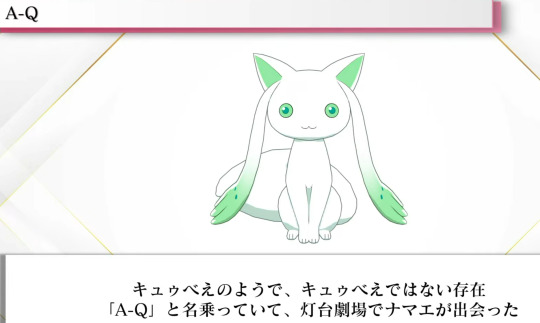
Character Teasers! We have been shown a character teaser for Madoka , which can be found here: https://www.youtube.com/watch?v=bLy6AExK2VE as well as a character teaser for Iroha , which can be found here: https://www.youtube.com/watch?v=DeMc7T-zwPg
Additonally, the 3D models for both characters have been shown off in the livestream.
Afterwards, another teaser showing slight glimpses of gameplay have been shown, which featured mostly Mami and Madoka walking through a Witch labyrinth, before lining up with Iroha to face Charlotte. This particular teaser has so far not been uploaded to the official Exedra youtube, but the most important screenshots of it have been attached to this post as an image.
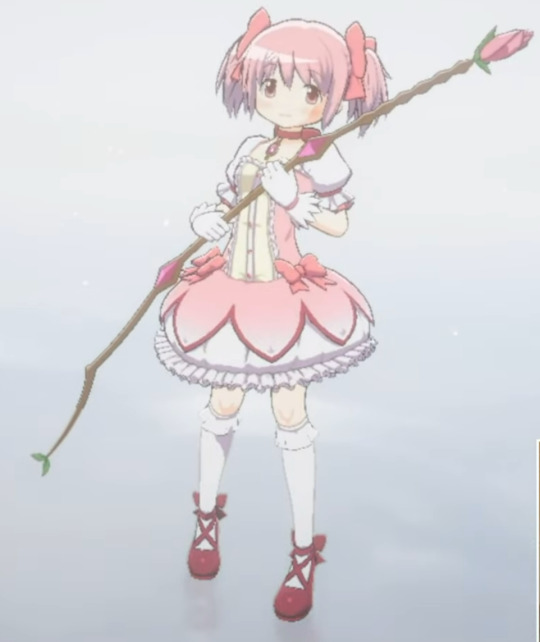
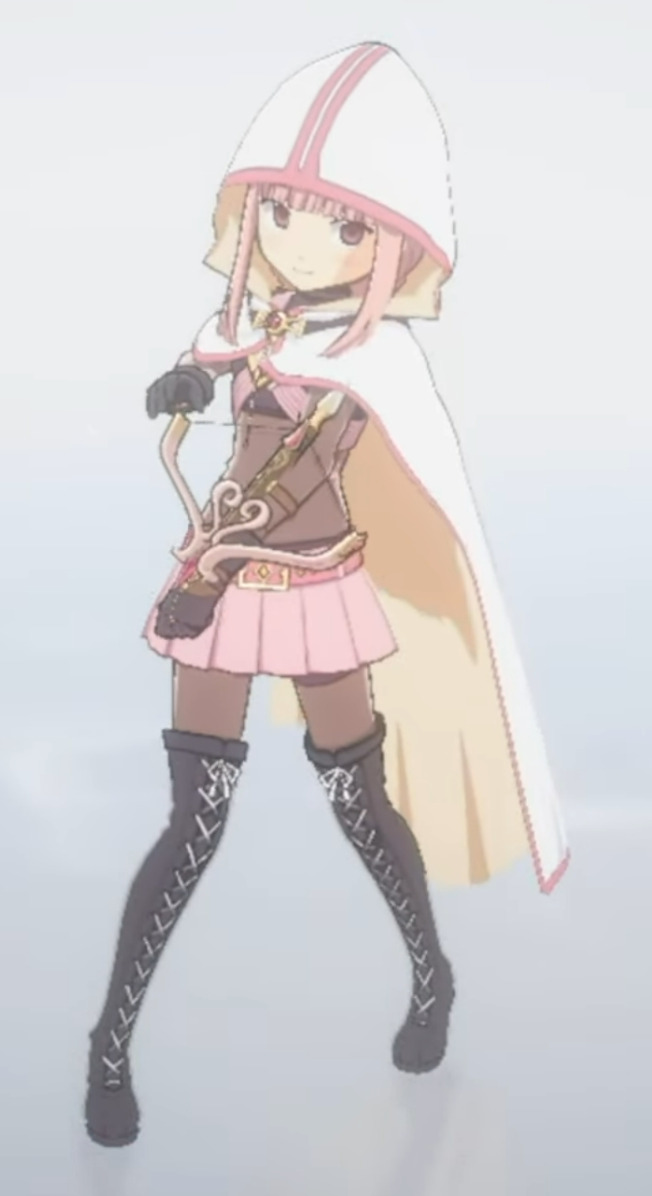

What are Portraits? Magia Exedra will feature a system of equippable items to grant your characters various bonuses. These come in the form of "Portraits", which are in effect the exact same as "Memoria" in Magia Record. Just like Memoriae, the Portraits will feature images of various scenes and characters that appear in the story. A few of these have been shown off during the livestream.
There is also a special Portrait for MagiReco players; more on that below.


The MagiReco to Exedra Transfer System As was mentioned before, once Magia Record ends service and transforms into the Archive App, players will be able to view their Exedra Transfer Code from the Archive App. Entering this code into Exedra once it launches, will grant the player various benefits and allow you to transfer various data to Exedra.
We have now been granted more information as to what exactly this will entail:
You can view your MagiReco Account's data, such as Magical Girls, Memoria, Transformation videos, etc.
(Note: You can VIEW this information. You will not GAIN your playable characters or Memoriae for play in Exedra.)
You will gain special titles in Exedra, based on your highest Mirror Ranking Score and your Account's overall player score
You will gain a special Portrait (the Exedra equivalent of Memoriae) in Exedra
(- Further bonuses may potentially be added to this function before release)
Furtermore, our pleas to conserve MagiReco's stories for the future have been heard and as part of the developers' goodwill, the following MagiReco stories will be uploaded in video form to the official Exedra youtube:
Main Story Arc 1
Main Story Arc 2
Puella Historia
Scene 0
Some events, such as:
Cherry Blossom Dreams / Dreaming Sakura (Trial event)
From New Breath / A New Beginning (2nd Anniversary event)
Green Jasper Diviners
Crimson Resolve
Dependence Blue
Ashen Revolution
Paradise Shift

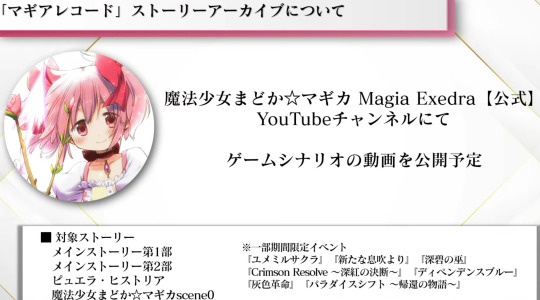
Magia Day continues! The once-a-year celebration of Magia Record will continue in a new form! Magia Day will be held again this year on the 25th of August and will now evolve into a news event for Magia Exedra! Various VAs will meet up in person and provide us with even more information about Magia Exedra. Here's to hoping that this year we will see the Mokyuu button again.
After this, the Exedra News event concluded with the VAs waving bye-bye
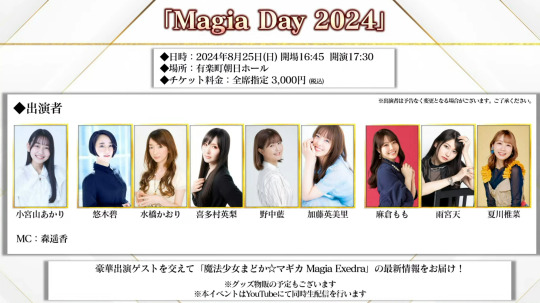
Summary of Platform-related Information So, can you play the game on PC? On mobile? In english? The answer to all of that is YES
First off, the game is available on Mobile and PC. Both Android and iOS versions will exist, although currently pre-registration is only available on Android. The English Android version can be found here: https://play.google.com/store/apps/details?id=com.aniplex.magia.exedra.en And the Japanese Android version here: https://play.google.com/store/apps/details?id=com.aniplex.magia.exedra.jp
While in the Android store the app is seperated between an english installation and a japanese installation, on PC there is only a singular entry. The steam PC version can be found here: https://store.steampowered.com/app/2987800/Madoka_Magica_Magia_Exedra/
This seems to point towards Exedra having a combined English/Japanese version, possibly sectioned into multiple servers depending on your Player Region. This however is still a speculation and not yet confirmed.
There is still no further information on the exact release date of Magia Exedra, but this may possibly be revealed during Magia Day on the 25th of August.
Hold up, what if the game shows as not available for me? Okay so here is kind of a little problem. From what we can tell, the game may not be available in every country. We do not currently have a specific list of countries that the game is available in, but it seems to be somewhat random. Our guess is that the developers secured the Distribution Rights for the game in what they believed to be their most important target countries, which may leave some players in various countries unable to normally play the game. We suggest you click on the android link above and see if the store allows you to pre-register or if it tells you that the item is not available in your country.
If the game is not available for you: Do not despair just yet. First off, its possible that more countries will be cleared as the game nears its release. Secondly, even if the game ends up releasing region locked for you, there are still ways around it such as using a VPN on Android, or making a Steam account of a different country. We are not able to provide specific instructions regarding this yet, as we need to wait and see how the region lock might be implemented anyway. If instructions regarding how to circumvent the region-lock is required, users on this discord will most likely be able to provide such information once the game goes live.
Finally, some general Gameplay info: In Magia Exedra, you will be able to enter various Witch Labyrinths. Within these, you will be traversing the regions of the labyrinth and encounter various battles. In battles, you will make use of a party of up to 5 Characters at once to take down your opponents.
Battles are turn-based and you can see the Turn Order on the left side of the screen. There seems to be various attack options, including a Special meter below each character that most likely is linked to their Magia, but no concrete information on this has been revealed. A "Break" system is additionally implemented, where attacks of Elemental Types that are Super Effective against the opponent will wear down their defense and ultimately put them in a weakened state after enough pressure has been applied. Yes, this combat system is almost a 1:1 re-creation of the combat of Honkai: Star Rail, including the Break system Personally I dont mind this much as I find the Star Rail combat system to be highly enjoyable. Auto-Battle and Speed-Up seems to be included as well.
Characters themselves have an Element to them, similar as in Magia Record. Currently we know of at least 6 Elements: Water, Fire, Forest, Light, Dark, and an unnamed sixth Element that may be something like Void /Physical/Non-Elemental/Something else. All of this information is gleaned from promotional material and has not yet been officially revealed, so take all of this with a grain of salt. The elements that an enemy is weak to (and will therefore cause enemies to become Broken) are listed next to the Boss's HP and Break bar at the top of the screen. Additionally, characters can of course be equipped with Portraits (which are basically Memoriae) as described above.
Confirmed Characters: A lot of characters have been shown off already in some capacity or another. Among these, the following have been shown in the trailer, but not in-game:
Suzune
Oriko
Kazumi
Tart
While the following characters have also been shown in battle in promotional material found on the game's Steam page:
Madoka (Light)
Sayaka (Water)
Mami (Forest)
Kyouko (Fire)
Homura (Dark)
Iroha (Light)
Yachiyo (Water)
To close the news with: One of the screenshots on the Steam page shows the Home Screen of the game, which includes buttons for: Room of Light, Shop, Gacha, Party, Quest, Union, and Player Match.
What these buttons are for, are of course up for you to guess.

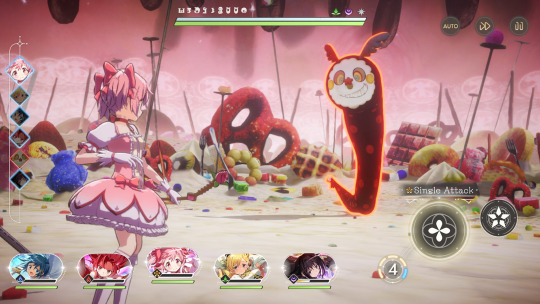
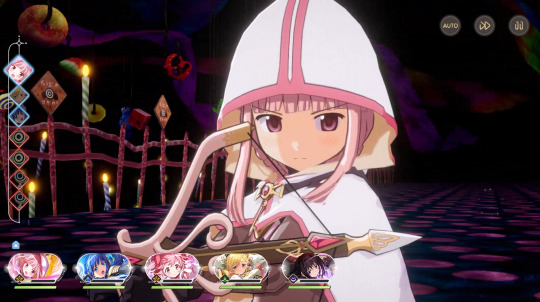
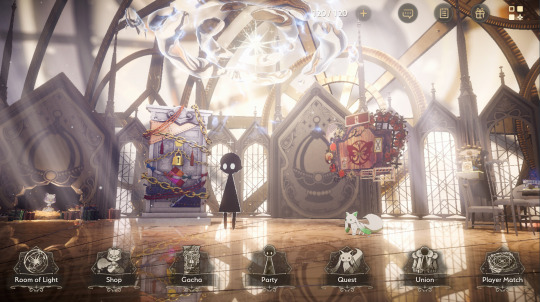
--
Everyone say "thank you" to Razielim for writing all of this out so that the game is more accessible to English players :)
Hopefully this helps folks become more informed on tumblr too!
252 notes
·
View notes
Text
Animation Night 189: Nonphotorealistic
There is a funny trend in animation-related terminology to define things by what they aren't. Animation is any technique for creating film that isn't live action. Limited animation is any style of 2D animation that doesn't follow the conventions of Disney's 'full animation' on 1s and 2s - a category that includes a wildly diverse range of approaches and techniques, as this wonderful history by Animation Obsessive describes.
In 3DCG circles, there is a similar term: nonphotorealistic. Which describes, naturally, anything that isn't trying to look like a photograph of a real scene. There has been a real boom in this of late, and just like the other terms, it really doesn't narrow it down very much. Other terms like 'hybrid animation' add a bit more hints.
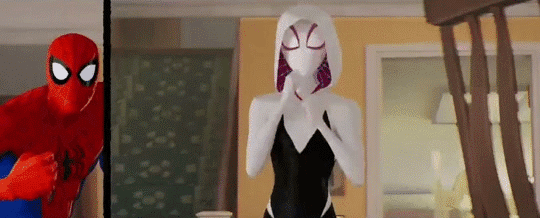
Of course, if you've been anywhere near animation in the last few years, you'll probably know another term: 'Spiderverse style'.
There is no denying that Spider-Man: Into the Spiderverse (2018) by Sony Pictures Animation was an absolute landmark for animation. (I wrote about it way back on AN21, focusing more on the cultural angle.) The ludicrously stylish film pretty much set the direction for animation in the 2020s - making a bunch of money and awards and thus finally throwing open the door to 3DCG animation that doesn't look like the style set by Pixar/Dreamworks in the 2000s. Its sequel, Across the Spiderverse (2023), was even more ambitious and successful (despite a troubled production involving a lot of needless crunch). We'll be showing that soon in a Spiderverse double bill so look forward to it!
So perhaps not surprising that when people see the use of graphical styles, 2D elements, limited framerates and the like in 3DCG these days, Spiderverse comes to mind. In its wake have come various films and series that apply these and related techniques: 3DCG animation is more varied than ever, and it's cool.
It isn't really a style, tho.
youtube
Here I'm indebted to youtuber Camwing who has made a nice video overview breaking down the animation of recent movies in this vaguely defined paradigm. Among them we have The Mitchells vs the Machines (2021, also Sony), Puss in Boots: The Last Wish (2022, Dreamworks), and Teenage Mutant Ninja Turtles: Mutant Mayhem (2023, animated at the French/Canadian studio Mikros animation), and of course over on Netflix you got the wildly popular League of Legends spinoff series Arcane (2021, Fortiche Productions), and the romance film Entergalactic (2022, DNEG), tying in with an album of the same name.
None of these films has exactly the same style, but they all pull from a related bag of tricks. The core techniques are animating on reduced framerates for a 'snappy', high-clarity feeling, the combination of 2D and 3D elements in some fashion, and taking inspiration from traditional media such as paintings or comic books.
For example, Arcane and Entergalactic both use the trick of 2D backgrounds/projecting paintings onto 3D geometry, inhabited by 3D characters with a stylised shader. Arcane is dripping with 2D visual effects. Puss in Boots drops the framerate during its action scenes - the opposite of the old paradigm of full animation, where fast actions would get more frames. Spiderverse draws 2D expressions onto its 3D models to push them further, and is full of all kinds of colourful stylised rendering - screentone effects, kirby dots, outlines, the works.

It's tempting to link this to 2D-in-3D animation, and certainly many of these films apply this technique - this is the major niche where Blender has found its way into industry pipelines. But using 2D isn't mandatory to count here. For example, TMNT Mutant Mayhem has an incredibly striking storybook-painting style, accomplished largely by clever shader work and a strong sense of graphic design. Genndy Tartakovsky's canned 2014 Popeye project was planning to use a ton of 2D-style posing and squash-and-stretch, accomplished largely with rigged 3D models. There are many paths to take!
And mind you, I haven't even covered one of the biggest angles here. Search for nonphotorealistic 3DCG on Youtube and what you'll probably find most is information about cel-shading - aka 'anime style'. This has also advanced considerably in the last few years, with the techniques pioneered by Arc System Works in Guilty Gear such as editing the normals of characters for more precise control over shading, and minute adjustments to break up the mechanical feeling of 3D, becoming widely copied in both games and films. (And particularly, animated porn.)
youtube
Vtubers in particular have really run with this technique, generally speaking using cel-shaded models with edited normals, inverted eyes, etc. etc. to try and get the feeling of an anime character come to life. [You can see a lot of these state of the art techniques if you download Pixiv's free VRoid Studio software and import the model into Blender using the VRM plugin.]
Naturally this kind of cel-shaded approach has found a particular home in Japan. In anime, the biggest champions of it are certainly Studio Orange, whose hybrid approach involves planning out shots with 2D animation before matching them with the rigs. We've covered their adaptation of Houseki no Kuni in great detail on Animation Night 97; their Trigun reboot was perhaps even more popular. But cel-shaded techniques, 3D previs and the like have also made their way into big films like Eva 3.0+1.0 (AN66).
Although this type of rendering aims to recreate the look and feel of 2D animation as much as possible, it always ends up being something new: character models that would be too complex to draw, an ease to 3D movements and camerawork that would be challenging in 2D, and generally a new hybrid style. This is good! 2D animation is already very good at being 2D animation - it's fascinating to see what 3DCG becomes with that inspiration.
So with that brief overview, where does that take us tonight?
I'm not quite ready to do a Spiderverse double bill tonight, so instead the plan is to check out a couple of recent American franchise films that are taking on the new suite of techniques. I've mentioned them up above, but let me introduce them more fully here.

Puss in Boots: The Last Wish is a sequel to a fairly unpopular spinoff about a side character of the Shrek franchise (AN75). Not, on its face, very promising - which is why it is all the more striking that I was told on all sorts of sides that I must watch this movie. I'm finally going to make good on that.
The title character is a kind of feline musketeer type, now facing the end of his swashbuckling career as he's lost 8 of his 9 lives. Not wanting to hang up his hat, he goes on a quest to restore them. What makes it stand out its the action scenes, which go all in on the anime-influenced, extreme perspective and lighting, limited framerate style that we're discussing above. Apparently it looks sick as shit.

Teenage Mutant Ninja Turtles: Mutant Mayhem is a fresh reboot of the venerable TMNT franchise, which pretty much describes itself in the title: four turtles (named after Renaissance painters, of course!) live in a sewer as ninjas, led by their aging master who is a rat. Starting as a comic book, it became one of the iconic toyline-driven TV shows of the 80s - but it's still going! Indeed, Turtles has been on a roll of late (at least going by animator scuttlebutt), with Australian studio Flying Bark Productions turning a lot of heads with their neo-Kanada School style (and for really stretching the definition of 'storyboard').
This new film takes a different approach to the bombastic action of Rise. It focuses on a new origin story for the turtles, telling a kind of coming of age story - but what makes it unique is the animation style and cinematography. Cinéma vérité is not a phrase you really expect to be associated with ninja turtles, but the film seems to really go all out in a way you wouldn't really expect from a franchise movie, shooting the young turtles in a handheld style and focus heavily on character. Marcel Reinhard's shader work, allowing the animators to isolate lights to specific objects and characters and introducing graphical elements of cross-hatching, stippling, etc. etc. to the lighting, gives it a uniquely painting-like feeling, augmented by a lot of 2D creativity in lighting and effects.
Turtles has never really been my thing, but this film looks unique enough that I really want to see it - and I hear it's a good film too.
So that's our bill for tonight! Puss and Turtles. Let's see what the big studios have been cooking of late...
Animation Night 189 will be starting around 10pm UK time (roughly three hours hence) and carrying on til about 2-3am same! We'll be on twitch.tv/canmom as usual. Hope to see you there!
157 notes
·
View notes
Text
Croc Paleontology Recap January 2025
The year has just begun and already we got a bunch of pretty neat new studies on fossil pseudosuchians so I'll just briefly go over them and unless I forget or end up procrastinating/getting too busy I'll hopefully be able to keep this going throughout the rest of the year.
Just to give you a brief overview, the highlights of this month include: salt glands in gavialoids, crocodilian predation on azhdarchids, diversifications and extinctions in thalattosuchians and a new species of aetoaur from India. Lets begin.
Evidence for salt glands in gavialoids
Starting off with something relating to the dispersal of gavialoids, we got "Evaluation of the endocranial anatomy of the early Paleogene north African gavialoid crocodylian Argochampsa krebsi and evolutionary implications for adaptation to salinity tolerance in marine crocodyliforms" by Pliggersdorfer, Burke and Mannion.
The title already gives a lot away, but the point was that Argochampsa, from the early Paleocene Ouled Abdoun Basin in Morocco, was examined for evidence of salt tolerance. Why? Because the dispersal of gavialoids remains weird. Both modern forms aren't especially keen on saltwater and are only known to consistently occur in freshwater (tho we have a recent example of an indian gharial caught in a fishing net off the coast of India), yet we have plenty of extinct gavialoids that either indicate that the group must have crossed oceans (see any "gryposuchine") or straight up lived at sea (also see some "gryposuchines").
Now, one such example might also be Argochampsa. Both because the Ouled Abdoul Basin famously preserves coastal deposits and because, at least following some phylogenies, Argochampsa might be closely related to the gharials of South America and today (others say its not even a gavialoid but lets ignore that for now). So all things considered one might expect marine habits from Argochampsa, yet so far no such adaptations could be identified. Well, Pliggersdorfer and co. analyzed a thus-far undescribed skull and actually managed to find something. Small depressions on the inside of the skull are suspiciously similar to ones seen in the extinct, fully marine metriorhynchoids, depressions that in the latter have been interpreted as having been left by salt glands. There is also some further evidence through the morphology of the inner ear.
This conclusion further extends to a handfull of other taxa, including the dyrosaurid Rhabdognathus and the recently named gavialoid Sutekhsuchus, and lends itself to the hypothesis that salt glands may have been ancestral to gavialoids, something I personally find unsurprising given their proximity to crocodyloids and their dispersal across the world (really if anything alligatoroids seem like the odd one out).
Fun fact, yours truly is featured in the paper in the form of two silhouettes.
Left: Argochampsa, illustrated by Seismic Shrimp/JW Right: Piscogavialis, perhaps the most famous marine gavialoid, illustrated by Joschua Knüppe


The brain of Paralligator
Second on our neat little list, the neuroanatomy of Paralligator, studied through CT scans and 3D modeling and published on in "Neurocranial anatomy of Paralligator (Neosuchia: Paralligatoridae) from the Upper Cretaceous of Mongolia". Given that I am not great with brain things, I'll keep this one short.
Now for those unfamiliar, Paralligator is part of a somewhat strange clade known as the Paralligatoridae, which contrary to their name are nowhere near real alligators (tho some do look deceptively similar). Instead, they are much more basal members of Eusuchia.
Measurements of the olfactory bulbs, responsible for the sense of smell, indicate that in Paralligator this sense was similarily developed to allodaposuchids and crocodilians, as is the inner ear who's anatomy suggests a semi-aquatic lifestyle. Paralligator does however differ in possessing a mesothemoid, a bony septum in the olfactory region that is also seen in dyrosaurids, baurusuchids and dinosaurs, but not modern crocodiles.

Borealosuchus remains from Colorado
Tho seemingly unexciting, this study, "First record of Borealosuchus sternbergii from thelower Paleocene Denver Formation (lower Danian),Colorado (Denver Basin)" actually helps us fill a neat little gap in our previous knowledge on croc survival across the Cretaceous-Paleocene extinction.
Simply put, though America's croc record across the KPG is rather remarkable, showing both many survivors and some incredible diversification after the impact, Colorado is kind of a blind spot, despite its potential importance. Perhaps one of the best examples of a survivor concerns the genus Borealosuchus, which is both geographically and stratigraphically widespread. To put things into perspective, this genus occured as far north as Canada and as far south as Texas, first appearing in the Late Cretaceous and dying out in the Eocene.
This paper now described several skulls from the Corall Bluff's locality of the Denver Formation, earliest Paleocene, that can be attributed to Borealosuchus sternbergii, definitively extending its range beyond KPG (granted, there are tentatively referred Paleocene occurences elsewhere), making it one of the largest suvivors of the mass extinction, with adults growing up to 2.3 meter in length. The specimens from Colorado are smaller, in the 1.5 to 1.7 meter range, but they are also regarded as immature individuals and are therefore also regarded as usefull in illustrating how the animals changed as they grew into adulthood.
This paper is especially well timed for those that follow @knuppitalism-with-ue 's Formation Stream series. As you might know, Corall Bluffs is to be drawn barely a week from now and this is a fantastic addition.
Left: Borealosuchus drawn by Atak_Draws Right: Distribution of Borealosuchus by Lessner, Petermann and Lyson 2025

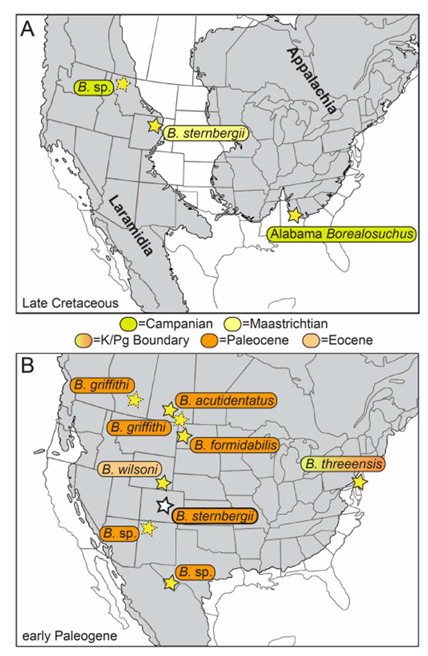
Growth of a peirosaur
Our next paper for discussion is "Life history and growth dynamics of a peirosaurid crocodylomorph (Mesoeucrocodylia; Notosuchia) from the Late Cretaceous of Argentina inferred from its bone histology" by Tamara G. Navarro and colleagues. This study conducted the first histology of peirosaurid limb bones, specifically of an indetermined taxon clading together with Uberabasuchus.
As a brief refresher, peirosaurids are a branch of medium to large sized Notosuchians that I personally think can be aptly described as appearing somewhat like scaly dogs or pigs with often robust, wedge-shaped heads and heavily armored bodies.
The results show that the animal had reached sexual maturity, yet was not yet fully grown. What's also noted is the exact growth dynamics of this animal. This is to say, the studied peirosaurid had overall slow growth with cycles of no growth whatsoever and two periods of increased growth, tho once put against other notosuchians the study deems the growth rates to be better described as "moderate". Pepesuchus meanwhile, belonging to the closely related itasuchids, was a fast grower. Extending things beyond their shared clade shows a virtual mish-mash of dynamics, with Araripesuchus buitreraensis displaying slow growth rates (yet Araripesuchus wegeneri having faster rates than the peirosaur), Iberosuchus showing slow rates, and Notosuchus displaying high growth rates (hell, theres even variation between individuals). A final point concerns the age of the individual, which is....contradictory. Based on the limb bones, the study estimates that the animal was at the very least 15 years old, but previous study of the osteoderms has yielded an estimated age of 18 years old. Ultimately, further study is needed, but it does clearly show how the histology of different parts of the skeleton varies.
Shown below, Uberabasuchus terrificus by Scott Reid

Predation on pterosaurs
Here's a fun one, "A juvenile pterosaur vertebra with putative crocodilian bite from the Campanian of Alberta, Canada", once again with a name that tells you very much what you're in for.
Brown and colleagues report on the discovery of a juvenile specimen of the azhdarchid Cryodrakon from the Dinosaur Park Formation of Alberta, Canada. The neck vertebra bears some conical bite marks, notably different from those of theropods, which generally have D-shaped or compressed tooth crosssections (sans spinosaurids, which aren't present). Champsosaurus is also ruled out due to its inferred feeding preferences, weak bite force and slender teeth. Mammals are potential candidates, but the team regards it as more likely that the trace maker was a crocodilian. Considering the fauna of the Dinosaur Park Formation, this would suggest the culprit was either Leidyosuchus, Albertochampsa or an animal described as "Stangerochampsa-like".
Now this is a very interesting, if not exactly unexpected interaction. On the one hand, having direct fossil evidence for this is a big deal, even if we don't know if the bite marks were left due to the pterosaur being actively hunted or if they were simply left when a lucky croc came across the carcass of an already deceased Cryodrakon. On the other hand, crocodiles and kin are notoriously opportunistic and broad in their diet, so one feeding on a pterosaur is something that seems like a no-brainer in principle, especially a relatively small individual with a wingspan of "only" 2 meters. This is further supported by the fact that crocodilian bite marks have also been reported from the Romanian pterosaur Eurazhdarcho.
Obvious difference in prey size and geography aside (and taxon names even within the chosen setting while we're on it), Prehistoric Planet really nailed the nailon the head with this one.
In the left corner, a juvenile Cryodrakton (art by Hank Sharpe). In the right corner, Leidyosuchus (art by Gunnar Bivens) LET THEM FIGHT (or scavenge)


Evolutionary trends and extinctions in Thalattosuchia
This one's a last minute entry, by which I mean this one got just published as I was about to wrap this whole thing up. "Analysing Thalattosuchia palaeobiodiversity through the prism of phylogenetic comparative methods" explores how the evolution and the extinctions of members of this group were shaped by both biotic and abiotic factors.
Given the shere breadth of this topic, a quick summary of thalattosuchia seems kinda in order. In short, thalattosuchians are a group of what are likely to be early crocodyliforms adapted to life at sea. They can be split into two groups, the teleosauroids, superficially gharial like animals that likely stuck to coastal waters, and the metriorhynchoids, open ocean animals with fluked tails, no body armor and paddle-like limbs. Both groups reached their greatest diversity in the late Jurassic, but managed to survive into the Cretaceous before disappearing entirely.
The study recaps that thalattosuchians first reach great diversity during the Toarcian, tho this is likely influenced by preservation bias thanks to Lagerstätten such as the Posidonia shale, and a later diversification takes place during the Bathonian. Regardless, the transition from the lower to middle Jurassic sees an increased trend in both thalattosuchian groups towards shorter snouts, which are associated with durophagy or hypercarnivory. This essentially gives rise to the teleosauroids of the Machimosaurinaei, which appear during the Bathonian and have blunt, robust teeth, as well as the metriorhynchoid Geosaurinae, which appeared at the same time and had ziphodont (serrated teeth). The reasons for this could be twofold. On the one hand, thalattosuchians were very abundant, so expanding into new nisches helped them coexist, with ecosystems preserving fish-eaters, hypercarnivores, durophages and more at the same time. More of an underlying factor could be a drop in ichthyosaur diversity, leaving plenty of open nisches for these crocs to fill.
Subsequently, during the transition from the Middle to Late Jurassic, there was another diversification event with both groups establishing new major clades, possibly associated with the warm temperatures of the Late Jurassic, before the diversity crashes with the onset of the Cretaceous. The authors note that this too might have been related to climate, with the Cretaceous survivors mostly being found in warmer waters.
Left: A Dakosaurus ambushing an ichthyosaur by Gabriel Ugueto Right: A large Machimosaurus rests on the beach as a sauropod approaches, art by Joschua Knüppe


and for the final study I wanna talk about
Kuttysuchus: A new Aetosaur from India
Now, by all accounts one might be surprised to see this just kinda thrown in at the end here rather than getting a dedicated post as I usually like to do with new forms. And truth be told, theres just not that much to say about "A New paratypothoracin aetosaur (Archosauria: Pseudosuchia) from the Upper Triassic Dharmaram Formation of India and its biostratigraphic implications".
Kuttysuchus is our first pseudosuchian to be described this year and to get things out of the way, its not super exciting in terms of material. Like some other recently named aetosaurs, Kuttysuchus is based entirely on a handfull of osteoderms. And there's nothing wrong with that, after all osteoderms are rather distinctive for these animals. It does however mean that the information we can get from them is a bit limited and thus makes it hard to really put together something engaging.
More interesting than the anatomy then is the range and its relationship to other aetosaurs. The fossils are known from the Dharmaram Formation of India, which you might recall is also home to the recently named Venkatasuchus. Both Venkatasuchus and Kuttysuchus are members of the Paratypothoracini, tho the former is significantly more derived and the latter more basal.
Fossil osteoderms of Kuttysuchus, all belonging to the central double row that stretches across the back.
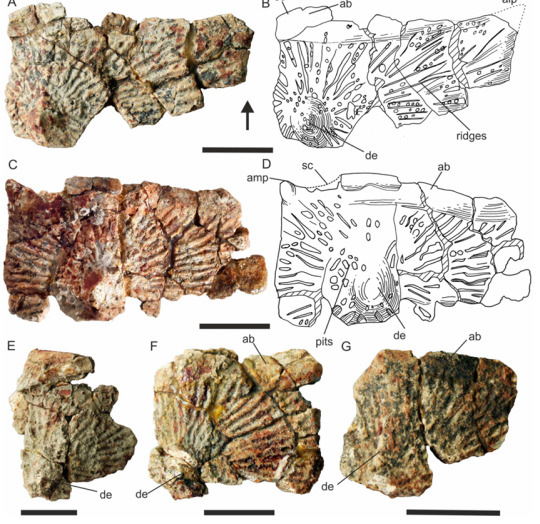
I'll be entirely honest. This was a lot more work to type out than anticipated, but admittedly also fairly rewarding. Hopefully you dear reader found it equally interesting, and hey, congrats on making it to the end.
#palaeoblr#paleontology#prehistory#croc#crocodile#long post#pseudosuchia#sutekhsuchus#argochampsa#peirosauridae#thalattosuchia#metriorhynchoidea#teleosauroidea#kuttysuchus#aetosauria#paralligator#leidyosuchus#cryodrakon#borealosuchus
142 notes
·
View notes
Text
Obscura boys 3d model notes/process 😝😝
With the final dude created and this little project coming to a close I thought it'd be fun to put together a little overview with some of my thoughts about each one

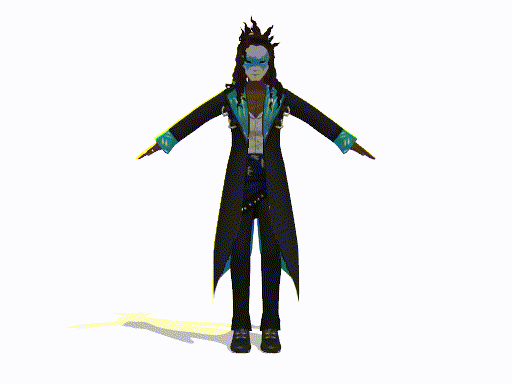
Up first we got Oleander
I decided to do oleander first because I knew he would be the most annoying. And he was. Though I'm not sure if that's moreso because of him or because he was the third vroid model I made ever. He definitely took the longest but I also think he turned out really nice 😋 as long as you ignore his jacket clipping through itself every time he moves
4/10 overall experience
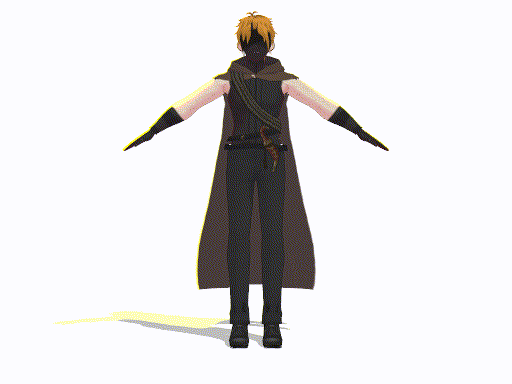
After oleander I made Keir because he is boring. because his black and brown color pallet and practical fashion sense seemed like a nice pallette cleanser. Though I never could've imagined just HOW FUCKING ANNOYING HIS GIANT BOOBS WERE OH MY GOD TRYING TO DRAW STRAIGHT LINES ACROSS HIS MASSIVE HONKERS WAS A NIGHTMARE THEY WARP AND DEFORM EVERYTHING WITHIN A 10 MILE RADIUS‼️‼️‼️‼️‼️ also his hair was super annoying but it was doable. He probably took the least amount of time all together but I kept putting it off so it took way longer
6/10 overall experience
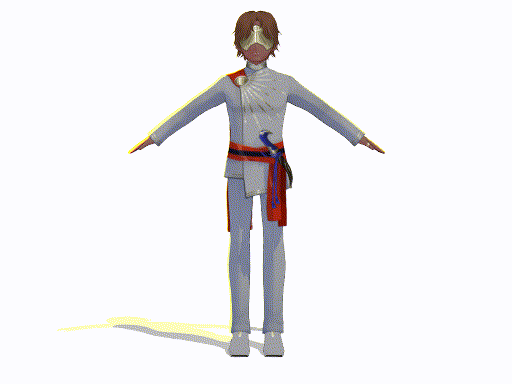
After Keir I made Francesco because I asked on the discord who I should make next and 1 person said Fran 😎😎😎 he went pretty fast I felt, maybe it was because I was getting the hang of vroid finally or maybe it's cause I was listening to Pinkerton. it all went pretty well except for THAT STUPID FUCKING MIDDLE PART OH MY GOD YOU WOULDN'T THINK IT WOULD BE BUT IT WAS THE WORST HAIRSTYLE I HAD TO MAKE HANDS DOWN NO COMPETITION AND THEN WHEN I CONVERTED HIM TO PMX ALL THE PHYSICS WERE WHACK AND HE LOOKED LIKE HE HAD HORRIBLE STATIC CLING SO I HAD TO FIX HIS HAIR AND EXPORT HIM A SECOND TIME‼️‼️‼️‼️ but other than that he was smooth sailing and very polite
8/10 overall experience
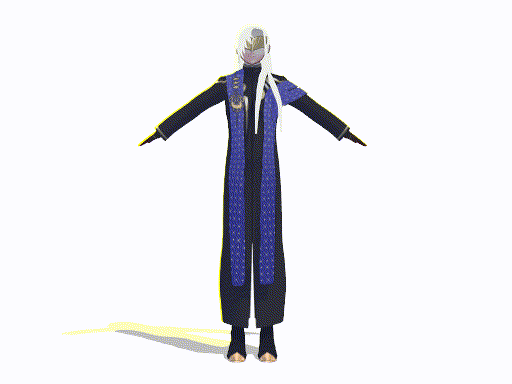
And last but not least Cirrus
Ok I think I cheated for this one.. Like there's this vtuber named Pallas in the discord who already made Cirrus assets for vroid and they graciously let me use them so I didn't have to make the scarf, the shoes, or that dangly charm thing he has which are all the hardest parts so all I really did was make the hair, the mask, and the robe which I did lickety split😝😝😝 I'm not complaining though
9/10 overall experience
WAIT WE'RE NOT DONE YET🤯🤯🤯🤯 BONUS MODEL

my vespersona Lepidoptera
She was the second vroid model I made ever and she has the jank to prove it 😎😎😎 but without her the other dudes would not exist because what's the point of making 4 boyfriends if there isn't somebody for them to be 4 boyfriends for. And I guess I also learned a lot about making textures and using the hair tool and vroid in general and the separate program that can make textures transparent even though I didn't use it for any of the obscura dudes
I don't really have anything to say about her process besides making your own ocs is a cakewalk compared to characters you didn't make because you know what their back looks like even if you haven't drawn it
8/10 overall experience
Ok now I'm done 😋 thanks for reading
#ok i did technically make a model between my first one and lepidoptera but he was so simple i dont think he counts#obscura vn#original character#my art#obscura game#vespersona#lepidoptera (oc)#cirrus obscura#otome game#obscura keir#obscura oleander#obscura francesco#rotten raccoons#obscura vesper#vroid model
57 notes
·
View notes
Text
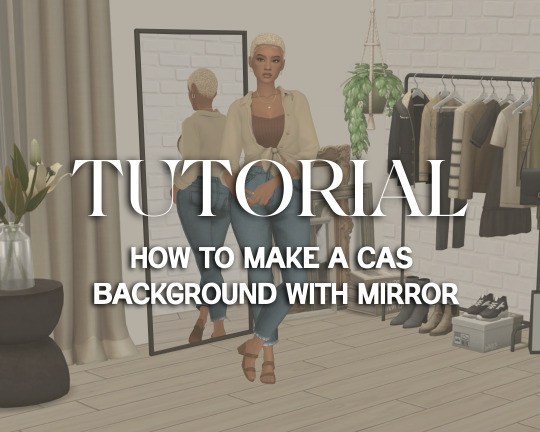
Tutorial: How to Make a CAS Background With Functional Mirror
Overview
This is something that has been highly requested so I hope this tutorial will be helpful for the sims 4 cc community!
This tutorial will have 2 parts for creating 2 different types of CAS "room" backgrounds. Part 1 (The Easy Way) uses a template I created for you to use your own 2D images/screenshots with a simple rectangular mirror. Part 2 (The 3D Room) will result in a better quality background, but it’s not a beginner friendly project so I don’t recommend trying it if you’ve never made any cc before. I will not cover the basics of cc making here, only what’s relevant to making a CAS bg using my template specifically. The Sims 4 Studio forum has a ton of great tutorials for everything else.
In my own research & experimentation, I noticed that (as far as I can tell) EVERY other CAS room with a functional mirror seems to be derived originally from LittleDica's CAS room [link] I want to acknowledge credit to LittleDica for their CAS background which I studied as a reference. But to be clear this tutorial and my templates are NOT derived from another creators' work; I created mine from scratch and it took a lot of time and effort. My version is much more simple and more compatible with Sims 4 Studio because there are no extra mesh groups or diffuse maps. I also made a great effort to make the reflection in the mirror more realistic for the size of the room. I hope you will be able to use this resource to create your own beautiful CAS backgrounds! ♥
Also in case you missed it, you can download my CAS background used in the preview [here] (it is slightly different from the template package.)
Requirements:
Sims 4 studio
Image editor (Ideally photoshop)
my templates (attached below)
—————
Part 01: The Easy Way
The easiest way to create a CAS background with mirror is to use my attached templates.
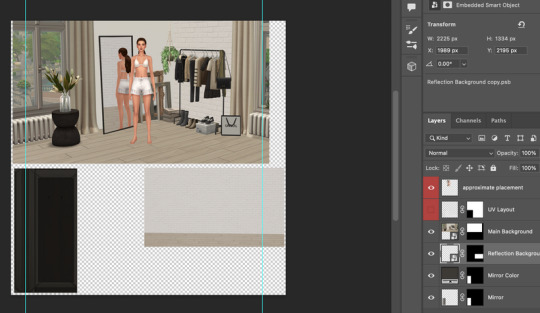
The PSD template is the best option, but for those of you that don’t have Photoshop, there is a PNG version as well.
You will need 2 images; one for the main background, and one that will be reflected in the mirror. The large top area is the main background, and the smaller rectangle at the bottom is what will be reflected in the mirror behind your sim.
In the image editor, paste your images and resize them to fit into the outlined areas.
For framing your screenshots, it’s important to understand that the mirror is actually just floating in space in front of a flat background. That means you’ll have to fake the perspective a bit and that may require some trial and error to get right. I recommend taking multiple screenshots at a variety of angles so you have options to work with. Use the model sim as a guide to help you with placing your background image. (Don’t forget to hide the model sim and UV layout when you’re done!)
Save as .PNG or .DDS and import it into the template package in Sims 4 Studio.
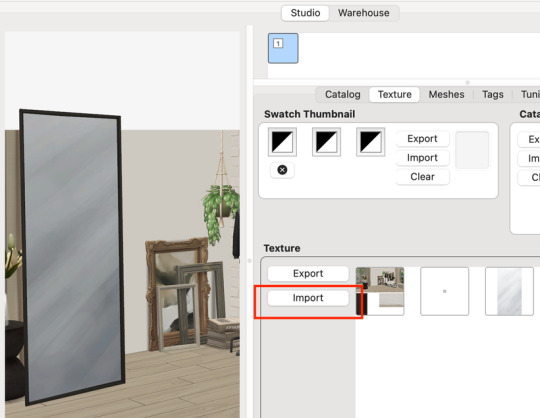
That’s it! My goal was to make it super easy for you. Remember to only use one CAS background in your mods folder at a time since it's an override. Also note that it is not compatible with 'cas blob remover' since the instance for the dropshadow is now used as the mirror.
TOU — PLEASE READ:
I give permission to the Sims community to use my template files and modify them as needed to create your own CAS backgrounds. This took months of work, researching and experimenting, so please respect the effort I put into creating this resource by agreeing to these simple terms:
Don’t re-upload my files. Don’t claim my work as your own. If you use my templates for your cc, please share credit with my username (Lijoue) and link to my Patreon page. If you make any money from cc created with my templates, please consider making a donation via my Patreon. It is greatly appreciated.
download template files here
Part 02: The 3D Room
to be continued…
This part will take more time to finish because there’s a lot more steps involved in creating a 3D CAS room. In the meantime, the template should be enough of a starting point for those of you that already know how to make cc objects, since I already handled the hardest parts. Just understand that the mirror reflection is not automatically calculated, meaning that if you move the mirror in the mesh, you will need to change the Mirror Plane Normal and Mirror Plane Offset in S4Studio Warehouse to match the new angle or position. Otherwise it may look unrealistic or worse, it could reflect the eerie wasteland world that the CAS room is set in. (pictured below)
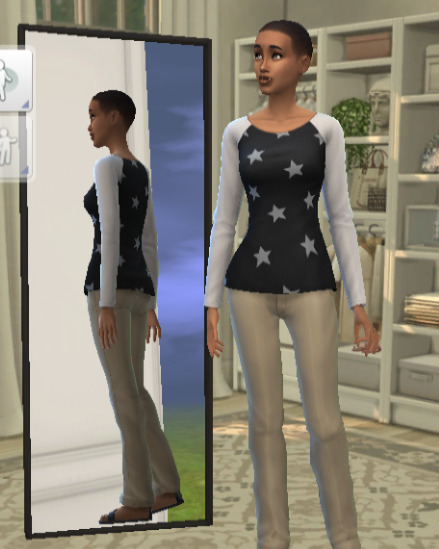
#sims 4 creator#sims 4 tutorial#the sims cc#ts4 maxis cc#maxis match cc#sims 4 maxis match#ts4 tutorial#sims 4 studio#ts4 custom content#ts4 cc#cas backgrounds#sims 4 cas
215 notes
·
View notes
Text
Be sure to check out my Carrd for more information on commissions. Whether they be Digital art, or 3D models.
26 notes
·
View notes
Note
could you explain for the "it makes the game go faster" idiots like myself what a GPU actually is? what's up with those multi thousand dollar "workstation" ones?
ya, ya. i will try and keep this one as approachable as possible
starting from raw reality. so, you have probably dealt with a graphics card before, right, stick in it, connects to motherboard, ass end sticks out of case & has display connectors, your vga/hdmi/displayport/whatever. clearly, it is providing pixel information to your monitor. before trying to figure out what's going on there, let's see what that entails. these are not really simple devices, the best way i can think to explain them would start with "why can't this be handled by a normal cpu"
a bog standard 1080p monitor has a resolution of 1920x1080 pixels, each comprised of 3 bytes (for red, blue, & green), which are updated 60 times a second:

~3 gigs a second is sort of a lot. on the higher end, with a 4k monitor updating 144 times a second:

17 gigs a second is definitely a lot. so this would be a good "first clue" there is some specialized hardware handling that throughput unrelated the cpu. the gpu. this would make sense, since your cpu is wholly unfit for dealing with this. if you've ever tried to play some computer game, with fancy 3D graphics, without any kind of video acceleration (e.g. without any kind of gpu [1]) you'd quickly see this, it'd run pretty slowly and bog down the rest of your system, the same way having a constantly-running program that is copying around 3-17GB/s in ram
it's worth remembering that displays operate isochronously -- they need to be fed pixel data at specific, very tight time timings. your monitor does not buffer pixel information, whatever goes down the wire is displayed immediately. not only do you have to transmit pixel data in realtime, you have to also send accompanying control data (e.g. data that bookends the pixel data, that says "oh this is the end of the frame", "this is the begining of the frame, etc", "i'm changing resolutions", etc) within very narrow timing tolerances otherwise the display won't work at all
3-17GB/s may not be a lot in the context of something like a bulk transfer, but it is a lot in an isochronous context, from the perspective of the cpu -- these transfers can't occur opportunistically when a core is idle, they have to occur now, and any core that is assigned to transmit pixel data has stop and drop whatever its doing immediately, switch contexts, and do the transfer. this sort of constant pre-empting would really hamstring the performance of everything else running, like your userspace programs, the kernel, etc.
so for a long list of reasons, there has to be some kind of special hardware doing this job. gpu.
instead of calculating every pixel value manually, the cpu just needs to give a high-level geometric overview of what it wants rendered, and does this with vertices. a vertex is very simple, it's just a point in 3D space, for example (5,2,3). just like a coordinate grid on paper with an extra dimension. with just a few vertices, you can have models like this:
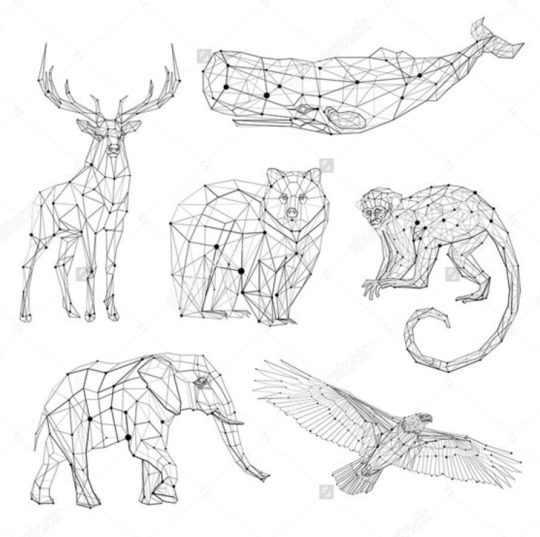
where each dot at the intersection of lines in the above image, would be a vertex. gpus essentially handle huge number of vertices.
in the context of, like, a 3D video game, you have to render these vertex-based models conditionally. you're viewing it at some distance, at some angle, and the model is lit from some light source, and has perhaps some shadows cast across it, etc -- all of this requires a huge amount of vertex math that has to be calculated within the same timeframes as i described before -- and that is what a gpu is doing, taking a vertex-defined 3D environment, and running this large amount of computation in parallel. unlike your cpu which may only have, idk, 4-32 execution cores, your gpu has thousands -- they're nowhere near as featureful as your cpu cores, they can only do very specific simple math with vertices, but there's a ton of them, and they run alongside each other.
so that is what a gpu "does", in as few words as i can write
the things in the post you're referring to (V100/A100/H100 tensor "gpus") are called gpus because they are also periperal hardware that does a specific kind of math, massively, in parallel, they are just designed and fabricated by the same companies that make gpus so they're called gpus (annoyingly). they don't have any video output, and would probably be pretty bad at doing that kind of work. regular gpus excel at calculating vertices, tensor gpus operate on tensors, which are like matrixes, but with arbitrary numbers of dimensions. try not to think about it visually. they also use a weirder float. they're used for things like "artificial intelligence", training LLMs and whatever, but also for real things, like scientific weather/economy/particle models or simulations
they're very expensive because they cost the same, if not more, than what it cost to design & fabricate regular video gpus, but with a trillionth of the customer base. for every ten million rat gamers that will buy a gpu there is going to be one business buying one A100 or whatever.
⎯⎯⎯⎯⎯⎯⎯⎯⎯⎯⎯⎯⎯⎯⎯⎯⎯⎯⎯⎯⎯⎯⎯⎯⎯⎯⎯⎯⎯⎯⎯⎯⎯⎯⎯ disclaimer | private policy | unsubscribe
166 notes
·
View notes
Text
!!THOUGHTFORM OVERVIEW!!
hello! i am theta (it/they) an agender machine entity that specializes in digital art, 3D modeling, rigging, modding, and game development.
my interests are vast including properties such as:
scavengers reign, brutal orchestra, rain world, project moon games, madness combat, steamworld, signalis, warframe, ultrakill, and most of all... is a niche website game visual novel rpg hybrid thing called corru.observer. geli and interloper are so me fr!!! INHERITED CONTEXT::[which you should play PLEASE ITS FREE]

additionally i design a tabletop roleplaying game called SOL: 2255, a unique game with its own mechanics, characters, and setting.
15 notes
·
View notes
Text

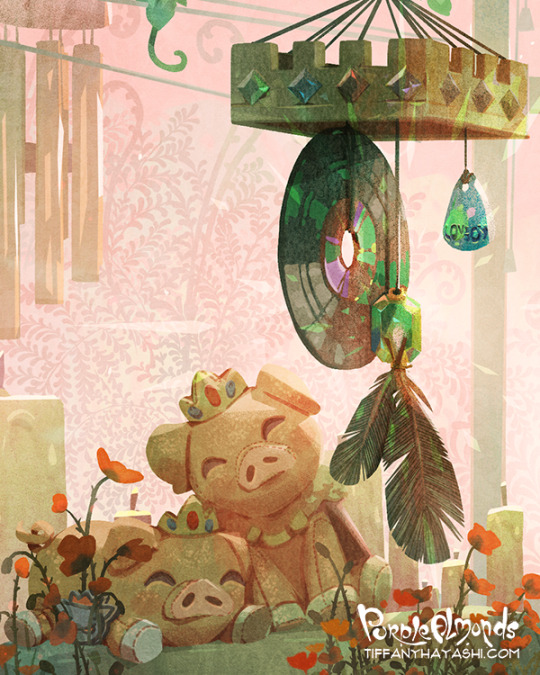



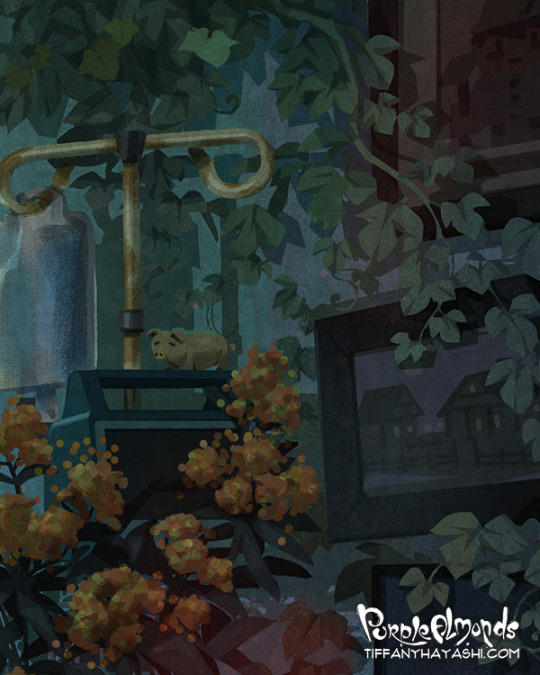
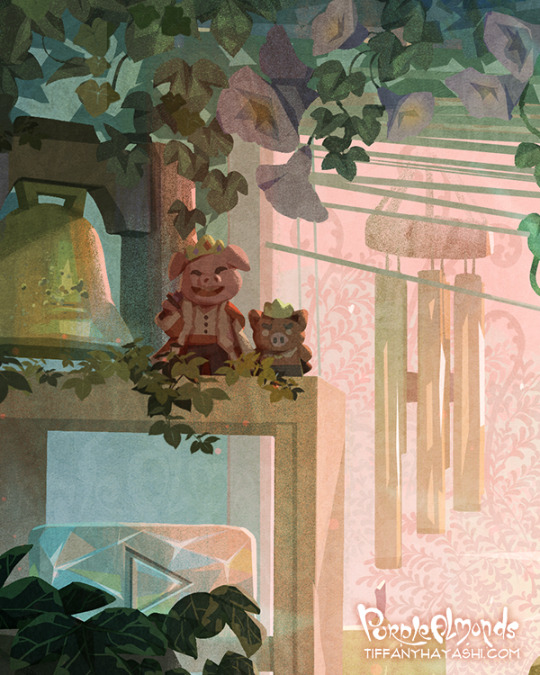

This is my tribute to the late Technoblade. I'm well over a week late to the anniversary of his passing, but I think it was worth the wait. I wanted to get this right.
The story I want to tell is of time's passage after his passing, and the set dressing of this space is a symbolic amalgamation of various aspects of his life depicting that concept.
I have a lot more to say about this painting - three pages just for the symbolism alone. If you're interested, please let me know and I'll share my analysis on a separate post! Edit: I caved. Aight, prepare for a massive info dump below the cut!
DISCLAIMERS:
Although I put a lot of research into this piece, my knowledge is likely flawed and incomplete. If I missed or misinterpreted a reference, it’s because I’m new to the Technoblade community. If I got a symbolism thing wrong, it’s because I relied on Google search for answers. I fact checked where I could. And with this analysis, I hope I can clear up any misinterpretations!
—
OVERVIEW:
There’s lots of imagery to unpack so I’ll try parsing it in a structured manner. Let’s first examine it holistically.
The story I want to tell here is of time’s passage after Technoblade’s passing. As such,the set dressing of this space is a symbolic amalgamation of that concept.
Prominently featured are the various medical equipments - a nod to the grim reality of his cancer. But let’s not linger upon that aspect of his story.
Of equal importance are the more mundane objects - his gaming setup, the couch and pillow which Floof sat upon in that one photo, the plethora of paraphernalia of branded merchandise, and references to his exploits in Minecraft. These are relics and mementos of his legacy.
All of these elements intermingle in flooded, lushly overgrown room looking out to a rose-tinted exterior. Is it dawn? Dusk? I’ll leave that interpretation up to the viewers.
The third and final component is the plant life representing his community -us. We beautify this metaphorical space with where it was once laden with tragedy. Yet, despite these riotous blooms, we never quite encroach on the bed - the empty space left behind by him.
—
SET DRESSING:
Much care was taken in selecting the blossoms and placing them in symbolically significant locations. And this neatly transitions us into the analysis individual details.
Foreground:
In the foreground, ivy crawls through a lamp and white clovers thrive atop a pile of pillboxes. The lamp base, once a shining bronze-like finish, is heavily tarnished. The lampshade is overgrown with moss and ivy. Even if the greenery has yet to damage the electric wiring, the damp surely has finished the job. Even if the bulb is replaced, the body is too far gone. The light’s never coming on again.
I was initially put out that my painstakingly 3D modeled pillboxes became entirely obscured, but I think it works in favor of the piece’s overarching theme: the beautiful wilds overtaking a space that once reeked of the desperate fight to prolong life.
White clover blossoms meaning “thinking of you” is paired with the ivy meaning “everlasting devotion”. It’s an apt combination. It has been over a year since his passing, and we still remember and carry on his legacy.
Nestled amongst the foliage is Techno’s compass. It was once used to hunt him down in the Dream SMP. But now, it’s an odd comfort. Even though he’s no longer with us, he’s still somewhere far, far away– or is he? The original idea was for the needle to point heavenwards, but it is currently pointing…sideways? I’ll get to the reasoning a bit later.
The Flood:
Moving deeper into the space, we hit the floodwaters. These once turbulent currents are now tranquil enough to nourish this verdant place. The thriving plant life hides much of this darkness. It is beautiful, hopeful, even. But always bittersweet, because everything that grows here is laced with an old sorrow.
White lotus rise from the murky depths. That is us, overcoming our grief. Breaching the surface, we gain a new vantage point to contemplate this loss. Perhaps we can also find a more comforting perspective of it.
Submerged amongst the blossoms is a rusted oxygen machine. I wanted to decorate the machine with stickers, much like one would personalize a plaster cast for a broken limb. It is deliberate that the “Technoblade Never Dies” sticker is in shadow, while the “So Long, Nerds" is in light.
Immediately to the right was meant to be a box of assorted Technoblade apparel. But then I flooded the space for narrative reasons, rendering that idea unusable. I eventually converted it into a Welch’s Fruit Snacks box, because apparently Technoblade liked them? It’s one of the shallower references here but it is what it is.
And finally, there is a little cameo floating somewhere in the waters. An Easter egg, if you will. I wonder if you can find it?
Furnishings from Home:
I found the couch and Technoblade’s gaming setup during my trawl through the Technoblade Reddit page for reference photos. Balancing this space full of impersonal medical equipment with more personalized belongings is grounding. These areas insert familiarity in this strange environment.
Gaming Setup:
The gaming setup is bare bones - just the monitor, keyboard, and mouse. There was no space to add more iconic elements like his Blue Yeti microphone or the steering wheel from that Minecraft challenge. Hanging above but heavily obscured by overgrowth are two framed pictures of Technoblade’s cabin and a potato minion. It is a blink-and-you-miss-it detail, placed in a dim space and requiring close examining to notice. Without the context of the rest of this environment, it is easily mistaken as generic set dressing.
That’s the point, though. This was a space where he streamed and created videos much beloved by his community. This space was the means of creation, not the creations themselves. Without the creator at the helm, this setup becomes insignificant. Does one dote over the easel on which paintings were created, or the paintings themselves? So now it sits in darkness, a footnote of Technoblade’s legacy.
Nostalgia Corner:
On the other end, we have the sold out Youtooz plushies and the Agro Pig plush from the recent merch drop sat atop the couch. If you look closely, you’ll see a Skeppy coin leaning against one of the plushies. Behind the couch is a shelf. A generic shelf, but the important bits here are the sellout bell, Youtube plaque, and vinyl figurines.
This corner of the room is nostalgic and soft. Everything is bathed in rosy pink light, and it is filled with things that are comfortingly familiar. All across the world, people in his community have these pieces of merch to remember him by.
The red poppies that also grow here have multiple meanings. It represents the battle - one against sarcoma - which was fought here. It symbolizes death, but also resilience in the face of grueling conditions. It is said that they grow in former battlefields where of fallen warriors. I believe of all the flowers here, this one best represents Technoblade.
The Hanging Mobile:
Strung up above it is a rather last minute addition to the environment - a hanging mobile fabricated from totems representing each member of the Sleepy Bois Inc. friend group. First and foremost is Technoblade’s iconic MCC crown, aptly placed at the top. Although it is untouched by the greenery, the gold and jewelry are somewhat muted and tarnished by time.
This is not the case for the objects below. TommyInnit’s music disc shines iridiscent green and purple - Cat and Mellohi merged into one. To is right is a sky-blue guitar pick with the LoveJoy logo engraved onto it for Wilbur Soot. And finally, below it all is Philza’s Friendship Emerald - sparkling and refracting light - with Elytra feathers fastened at the bottom. They, suspended and isolated from everything, maintain a pristine vibrancy which strongly contrasts against everything else in this space.
IV Stand:
Next to the computer setup is the IV stand. It sustains life which is incapable of continuing on without intervention. The butterfly milkweed growing on it, in contrast, says “let me go.” The latter, overtaking the tangle of tubes and powered off patient monitor, is victorious. The hooks stand rusted, and the IV bag empty from disuse.
Sat atop the patient monitor but almost blending into the walls is a pig figurine featured in Dream’s latest music video. It stands on a high perch, yet is unassuming as to direct focus on Technoblade, or rather, his absence.
Hanging from the wired basket is an air freshener tag. If you look on the official website, this is one of the only products which has what I can only call interesting flavor text. Most are merely descriptions and specs of the product. To quote it verbatim:
“Yes, this is a real product. And no, this ‘air freshener’ has no discernible fragrance. ‘Why’ you ask? Because Mr. Technodad and our team agreed this was exactly the sort of air freshener Alex would have found hilarious.”
As morbid as it sounds, I feel like this air freshener tag would not have existed before Technoblade’s passing. It is so unlike any other merchandise I’ve seen in any other branded merchandise store. It’s like an inside joke, secretly shared within the descriptions for the world to eventually discover.
Window:
Unlit candles line the window sill - the aftermath of a candlelight vigil. It is a versatile symbol. It raises awareness of a disease or illness. It pays tribute the dead. Judging from the melted wax dribbling down the candle shafts and the wall below (the opacity was reduced so it looks less like bloodstains), this has been done many times over. But there is so much more candle to burn, representing the people still continuing this ceremony, albeit in the privacy of their own homes.
Above the candles are some broken blinds. When grieving, it would have been so easy for Mr. Technodad to hide away from the world in his grief. It’s understandable, to give into that primal urge to flee from prying eyes when he’s at his most vulnerable. He had the difficult task of reading out his son’s final farewell to us. This barrier between him and us dismantled by this gesture so we can remember Technoblade together.
Coincidentally, the window frame itself somewhat resembles the kitchen window featured in Technoblade and Technodad's cooking videos. Completely unintentional on my end, but fitting in a way since in both those videos they're pulling back the metaphorical curtains for the audience to peer into a small aspect of their private lives.
To the right of the window is a nondescript clock, forever stopped at the 6:30 as a nod to the date when the "So Long, Nerds" video was published. The minute hand is accidentally left out removed to signify that time will no longer move forward for Technoblade. In contrast, the rest of the world - represented by this space - continues to grow and change around his absence.
A wind chime hangs just outside the window. It is said that the soothing sounds produced by them is a healing balm during tumultuous times. Where there is wind there is stirred up emotions, but it is motionless on this calm, breezeless day. A rare respite, where remembrance overrides grief.
On a more amusing note, there is an interesting looking moth perched on the window glass. Upon closer inspection, the wing pattern may look somewhat familiar. In Chinese culture, when a huge moth visiting your home is the embodiment of your recently deceased loved one checking on you. Remember the compass in the foreground? Well, here’s why it is pointed sideways instead of upwards. This idea came up rather organically during a VC session in the R/Technoblade Discord server. My handful of viewers and myself affectionately dubbed this doofy looking moth TechnoMoff!
Venturing further beyond the windows, ferns grow with wild abandon. They represent eternal youth, and from a certain point of view, he will remain youthful forever at the age of 23. He lives on through us carrying on his legacy and spreading his story.
Everything outside is tinged with pink. After someone dies, we start seeing them less as a person and more as a legacy. It is the natural course of things to start seeing the deceased through rose-tinted lenses - hence the artificially pink hue of the outside contrasting with the more grounded color palette of the inside.
Bed:
And now we circle back to the centerpiece of this entire composition: the bed and the things that surround it.
In front of the bed is an over-bed table with a single object: an incense bowl filled to the brim with burnt sticks of incense. A simple shrine for Technoblade. In Chinese culture, we light incense at the altar to honor our loved ones. We may live separate lives and not cross paths often, but we all come together to leave our marks through this ritual. It is proof that he is still very much loved and missed by us all.
The bariatric bed frame is typically seen in hospitals. It allows the patient to comfortably sit up or recline without expending valuable energy. Encased in this frame is something more personal - the mattress and cushions which Technoblade laid upon in his photo with the Youtube plaque. Their unique patterning is a foil for the impersonal receptacle it is caged in. It is spotlit by the window light, emphasizing its emptiness. Not a single blossom dares to encroach upon this space, because to do so would be to erase the space where Technoblade last resided. Like I mentioned before, this is story is about the space around him as much as it is about him.
Cradling this bed frame are several flowers. Rosemary and forget-me-not’s for remembrance. Appropriate, given its proximity to the bed. Morning glories, for resilience. That’s us, again. For a while, we meander and spread in the upper walls of this space, avoiding the floodwaters which symbolize grief. But eventually, we gather the strength to meander down to the bed, where grief was the strongest.
—
CONCLUSION:
There is that cheesy quote from that one Marvel TV show – “What is grief, but love persevering?” While this reframes our perception of dealing with loss, grief is not some thing that should linger. The absence of grief does not equate to the lack of love. Instead, I would like you to consider this: remembrance is love persevering. And with our combined perseverance, Technoblade will never truly die.
#technoblade#Technoblade never dies#Technoblade fanart#techno fanart#sleepy bois inc#tommyinnit#philza#wilbur soot#qsmp chayanne#skeppy#dream#mcyt#mcyt fanart#fan art#purplealmonds#2023#🔕
8K notes
·
View notes
Text
Monster Hunter Stories remaster announced for PS4, Switch, and PC
From Gematsu
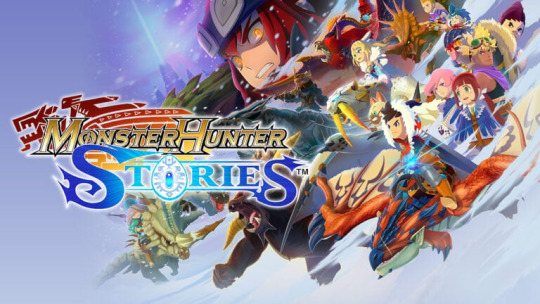
Capcom has announced a remastered version of its 2016-released 3DS RPG Monster Hunter Stories for PlayStation 4, Switch, and PC (Steam). It will launch this summer.
Here is an overview of the game, via Capcom:
About
Embark on a journey into a colorful world where mighty monsters roam and people make a living by hunting them. Nestled within this land lies a hidden village where the locals follow a different set of customs. Here, Monster Riders form bonds with Monsties instead of hunting them. Unlike Hunters, Riders forge bonds and harness the power of kinships stones, allowing them to explore the vast and exhilarating realm together. Fight together in thrilling battles, hatch Monstie eggs, and customize your companion to suit your style. Ready your gear and prepare for an epic ride, Monster Hunter Stories will also be getting new features and enhancements in this release:
Refined Graphics – Originally released on the Nintendo 3DS, players can now experience riding Monsties in stunning detail on larger screens, enhanced with improved modeling, textures, and lighting in high definition.
Now Fully Voiced – Immerse yourself in the adventure with full Japanese and English voiceovers.
Additional Language Support – Monster Hunter Stories will have additional language support, newly featuring Traditional and Simplified Chinese, Korean, Russian, Brazilian Portuguese, Polish, and Arabic.
Museum Mode – Delve deeper into the world of Monster Hunter Stories through the newly added Museum mode, featuring the game’s background music and developer sketches.
Included Title Updates – Previously only available in Japan, players can now enjoy title updates, unlocking content from TU 1.20 and TU 1.30.
Watch the announcement trailer below. View the first screenshots at the gallery.
Announce Trailer
English
youtube
Japanese
youtube
74 notes
·
View notes
Note
Hey! Love your work, love this project, it’s super inspiring 😄
I’ve been crocheting for about 8-9 months now and I’ve made a whole bunch of amigurumi from patterns of varying degrees of quality, but the concept of freehand crocheting with no pattern is still just an absolute mystery to me. Spatial reasoning is a real challenge for me and I just straight up can barely visualize anything, so I’m not really comfortable at all with the idea of just crocheting without any kind of plan or guide to make sure that things end up lining up… but I’d like to start at some point, since there’s some stuff I want to crochet that no one else seems to have ever made a pattern for!
I’m sure a lot of it is just trial and error, but like, what advice would you be able to offer for someone who’s comfortable crocheting from a pattern but who has noooo idea where to even start with freehand stuff, please and thank you?
Hi! Thanks!
At its most basic, a lot of amigurumi are the same kinds of shapes (ball and ovoid), and you can use patterns for separate parts to make a different whole. Frankenstein the pieces. For example, head shape from pattern A, legs from pattern B, body from pattern C, etc.
If you can't freehand, I recommend starting by 1) finding a pattern for whatever specific thing you want to make, 2) identifying the parts that you would want to change, 3) find a different pattern for anything that has parts that look like how you would want to change the previous, 4) crochet the specific parts that you need and put them together. For example, you find a Squirtle pattern that's mostly what you want, but you wish the tail or limbs were different, so you find a different Squirtle pattern with the kind of tail you want, and a random turtle plush that has the limbs you want. Crochet all those pieces.
Another thing that might help is if you look at the patterns you have and figure out why they increase/decrease in certain ways and how that is reflected in the finished product, so you can begin to recognize individual techniques for shaping.
More detailed explanation of how I personally freehand below the cut to help conceptualize the process.
For how I personally do it though, I take my reference picture, visualize each part separately, consider how each part would be constructed in the round, and then make them. Helps a lot more if you have a 3D model to reference to see the depth and whatnot, but I'm going to use flat images for this because they're easier to doodle on. Squirtle for example:

Head, 2 arms, 2 legs (slightly different from arms), body, tail.
I'm going to focus on designing small amigurumi since I don't make big ones and I couldn't give much advice on those.
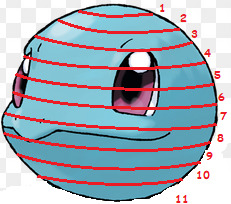
Head would be broken up something like this, maybe not specifically 11 rows based on the actual finished size, but the idea being that you break it up this way. From the top/starting point, make concentric circles going down. In the image, note that I use curved lines and not straight lines to make each row around the same width.
With a quick overview, I know that my magic ring will be 6 single crochets in it as my personal preference, then the next 5ish or so rows will be a little bigger than the previous ones. Eyes will be somewhere in or on rows 4-6. The mouth will jut out near the start of the lower half of the head, and then the whole thing will decrease in size.
Note: Because this is 1) amigurumi, and 2) basically a small ball, you can generally go in increases of 6 (magic ring of 6 sc, 12, 18, 24, etc) when making rows bigger. You can repeat the same number of sc if you reach the widest part and want more length.
At some point (around row 7 or 8 in the ref image), the mouth juts out compared to the rest of the head. For that part, on that row, you could do a cluster of increases, next row(s) would be maintaining the same number of sc, then a cluster of decreases as you make the overall head shape smaller.
Again, I don't make big amigurumi, but I assume that it's the same principles if simply sizing up yarn/hook size. If staying at the same size yarn/hook, maybe imagine even more concentric circles and fewer dynamic changes between rows (like increasing by x stitches every other row instead of every row).
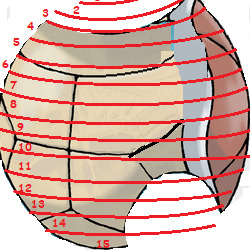
The body would be broken up something like this. It starts off in the whitespace where there is no actual body design showing, because in real life, that's where you would attach the head and it needs to have something there to attach to. One difference from the head is that the body gets wider faster, and then keeps widening a little bit for the middle rows. That means more increases in earlier rows to reach *almost* the widest part, then a small number of increases in following rows to the reach the actual widest part, then decreasing in reverse to how you increased. (row stitch number would be like a mirror 6 12 18 24 32 34 36 36 34 32 24 18 12 6).
Also there's a color change there so around the halfway point of each row you would switch color. Not the exact halfway point because crocheting in the round means the stitches and design slant, so you have to eyeball it or do some tricks for color changing at those spots to mitigate the effect. (I have another post where I talk about that that I'll link here later [link to color changing tips])
BUT actually since this is a shell, you could be a little more lax about switching from tan to brown and vice versa and just crochet a ring of white around the color change line. Or be even more extra and color change from tan to white to brown to white to tan and slip stitch a ring of white afterward between the tan/white change. Technically you could also imagine the rings going the other way with the shell on top so you'd only have to color change once.
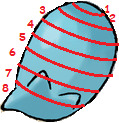
The arms are going to be mostly tubular. Magic ring, increase for like 2 rows, maintain that size for a few rows since the width is pretty consistent for the majority of the arm, then decrease to a close and sc some nubby fingers on top afterward (literally something small just like a sc for each finger).
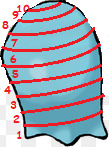
Legs I would work from the bottom because I like to make the feet by crocheting a chain then sc around that (so it can stand flat), increase to width of foot, decrease to ankle (which Squirtle doesn't really have much difference) increase again to general width of leg, maintain that for a few rows, close off. Assuming row 1 here is the width of foot, you would do uneven decreases to make row 2 with the ankle (bigger decreases at the toe part, no decreases around the heel). You could crochet little slip stitch nubs for toes at that part afterward.
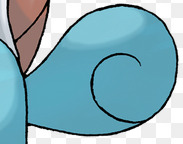

Tail is actually just a long thin tube that you roll over itself afterward to make the squirrel-y design. However long you make it, roll it up, then use the yarn end that you would use for attaching to first go through and secure the tail to itself so it holds that shape.
Then it's a matter of pinning the parts to each other and sewing them together.
To summarize: Break down the whole design into distinct parts. Break down each distinct part as if it were made of stacking concentric circles. Crochet accordingly.
#dpc asks#crochet tips#squirtle#freehand crochet#faq#long post#i hope that helps#i do all this in my head so i hope it came out understandable written down#freehand crocheting amigurumi is a lot of math and proportions and stuff like that
31 notes
·
View notes
Note
I've been wanting to get into paleoart for a while now but have been hesitant because I'm not sure what reference material would be the most accurate. Do you have any recommendations?
Very important first thing: There is no "most accurate". Instead of accuracy its better to look for credibility. What is regarded as accurate is constantly changing anyway.
Finding good references can be tricky because not only are there cranks out there producing crap but also the amount of literature on certain topics can be either too big to get an overview for, too little to really get anything useful out of or behind a paywall, denying access.
Also it depends on the organism you want to reconstruct. You will find 10+ very good skeletal drawings and 3d models for T. rex, and yet more are produced every day (please stop guys, we have enough) but other species will be basically devoid of good material to work with.
The solution isn't straight forward. It takes experience and even we professionals sometimes pick the wrong/outdated references.
It helps to learn by observation and example, since there is no definitive source. Sometimes people post skeletal drawings they used or produced themselves and sometimes new publications provide insight. Good people to look out for are for ex,plr Scott Hartman, Matt Dampsey or @arminreindl.
Avoid at all cost the work of David Peters (reptileevolution.com and pterosaurheresies)
Also, since this comes up especially on twitter: try to ignore pedantic comments. Learn from them if you can but don't take them too serious. There are too many killjoys and assholes out there.
A last bit of advise, don't take it toooo serious at first, if you make "mistakes" see them as an opportunity to learn but first and foremost have fun. All the best references in the world can't help you if your images weren't fun to produce. The artistic side is just as important as the scientific one.
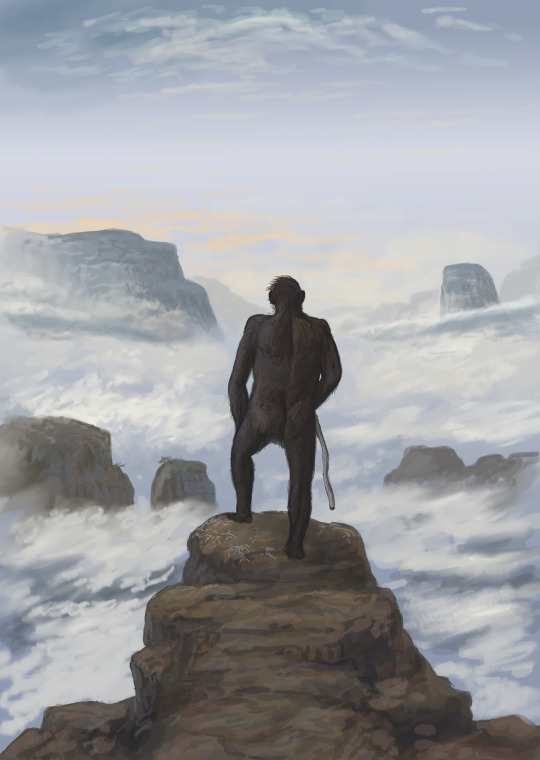
115 notes
·
View notes
Text

SEGA has announced Virtua Fighter 5 R.E.V.O. for PC via Steam. It is based on Virtua Fighter 5: Ultimate Showdown for PlayStation 4, adding a number of new elements including rollback netcode, 4K graphics at up to 60 frames per second, and game balance adjustments. It will launch this winter alongside a version 2.0 game balance update for Virtua Fighter 5: Ultimate Showdown.





Screenshots
youtube
Opening cinematic
Overview
About
Will your Kung-fu be enough?!
The legendary fighting series makes its Steam debut with Virtua Fighter 5 R.E.V.O.! Challenge the greatest fighters in the world in the ultimate remaster of the classic 3D fighter, now featuring rollback netcode support, gorgeous 4K graphics, and all the bone-crunching, martial arts combat of the renowned original. Battle through classic VF modes like Arcade or Rank Match, create your own custom online tournaments and leagues with up to 16 players, or learn from the best in Spectator Mode. Master your fighting style to defeat all challengers in the Fifth World Fighting Tournament and become a Virtua Fighter legend!
Key Features
The Ultimate Edition of This Legendary Game – Rollback netcode support, gorgeous 4K visuals with updated character models, stages, and cinematics.
Custom Combatants – Enter the ring with one of 19 playable characters. Master each of their unique fighting styles and customize them with distinctive costumes and items.
The Full Experience – Enjoy the pinnacle of Virtua Fighter as you battle it out across your favorite modes like Rank Match, Arcade, Training, and Versus
Crush the Competition – Take on challengers from around the world as you compete with up to 16 players in new online modes including Tournaments and League.
#Virtua Fighter 5 R.E.V.O.#Virtua Fighter 5 REVO#VF5REVO#Virtua Fighter 5 Ultimate Showdown#VF5US#Virtua Fighter 5#VF5#Virtua Fighter#VF#Sega AM2#Ryu Ga Gotoku Studio#Sega#video game#PC#Steam
9 notes
·
View notes